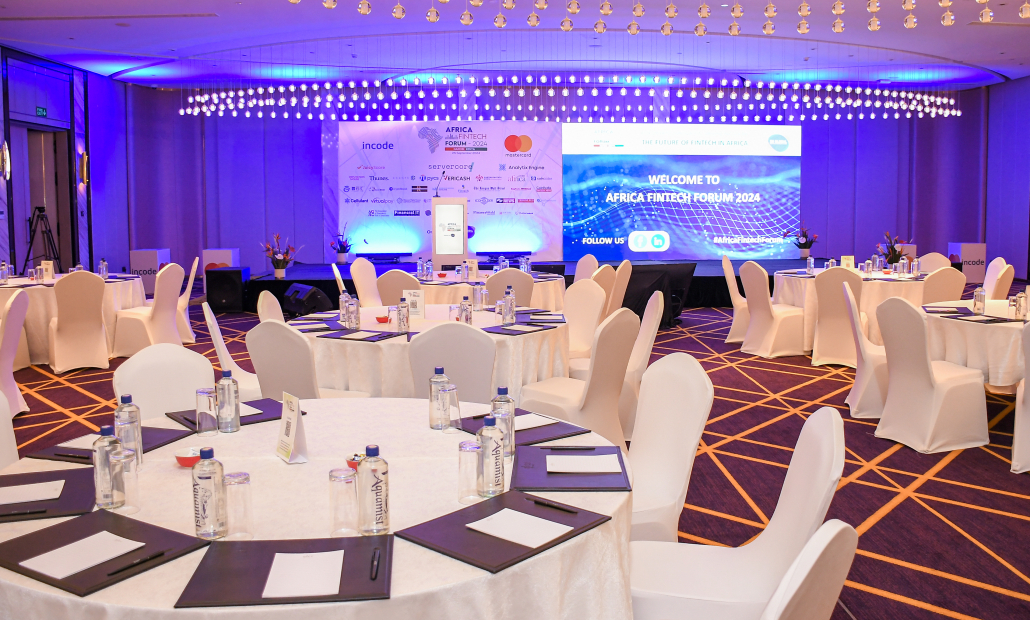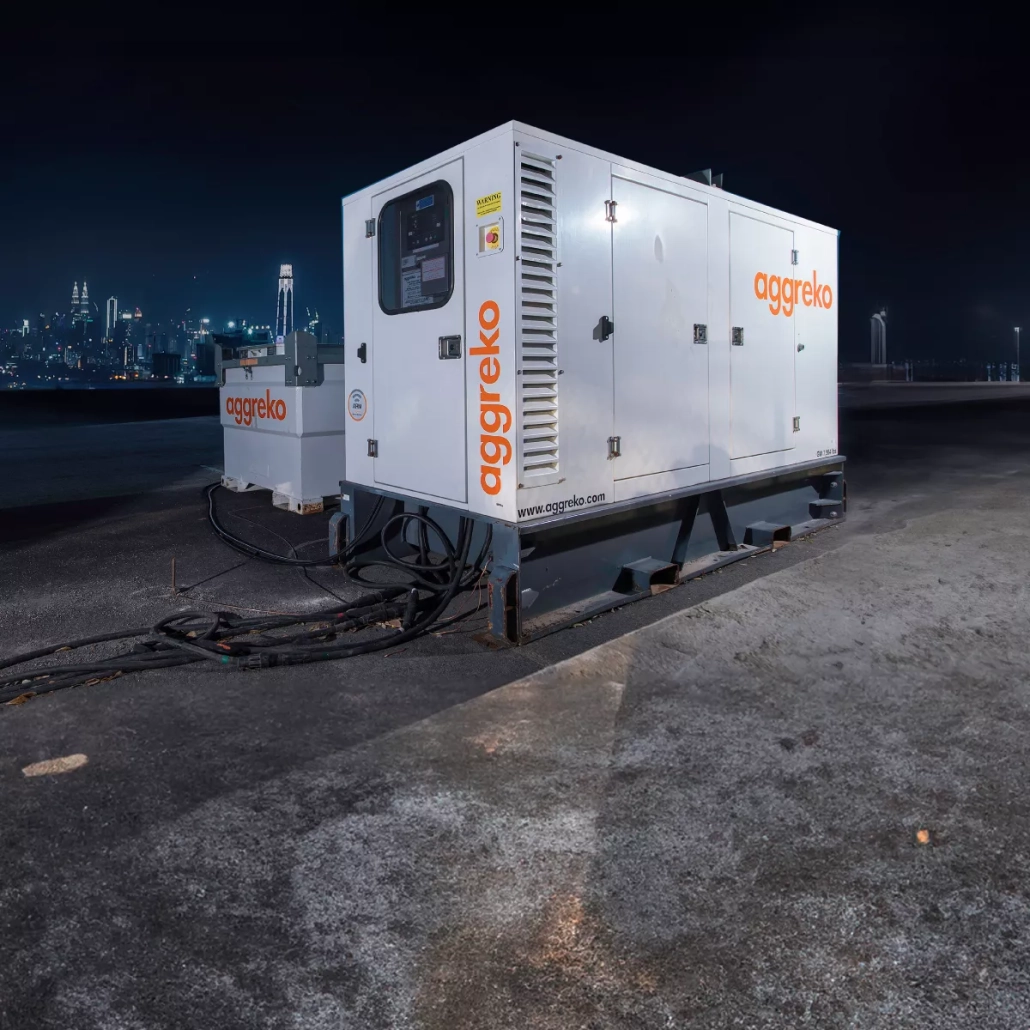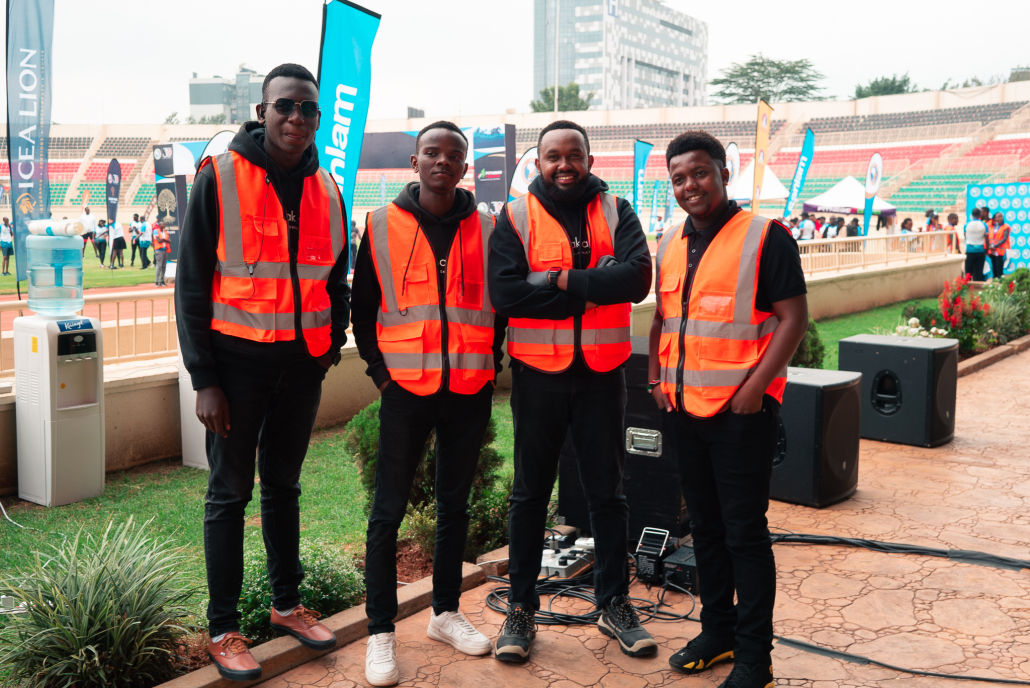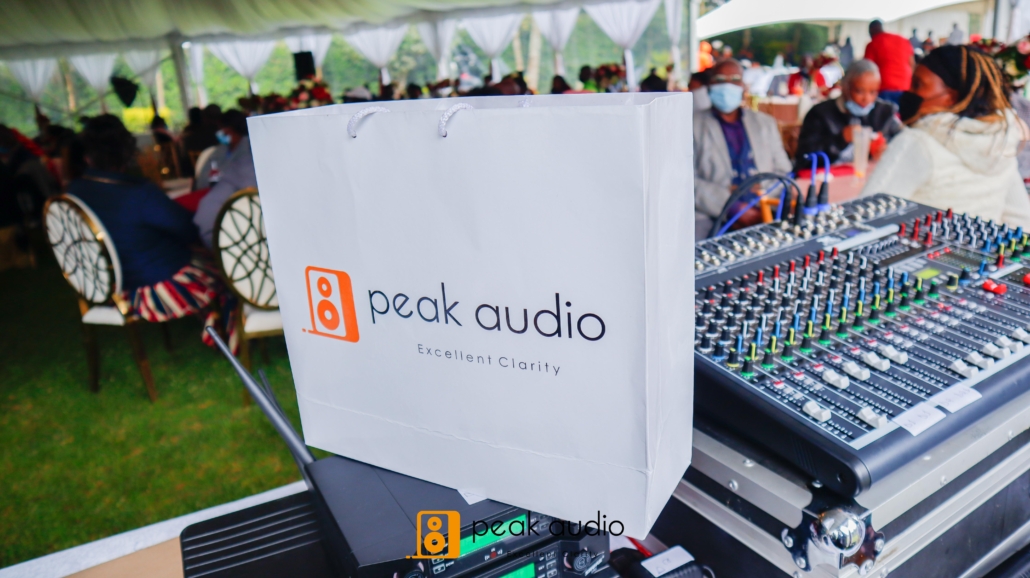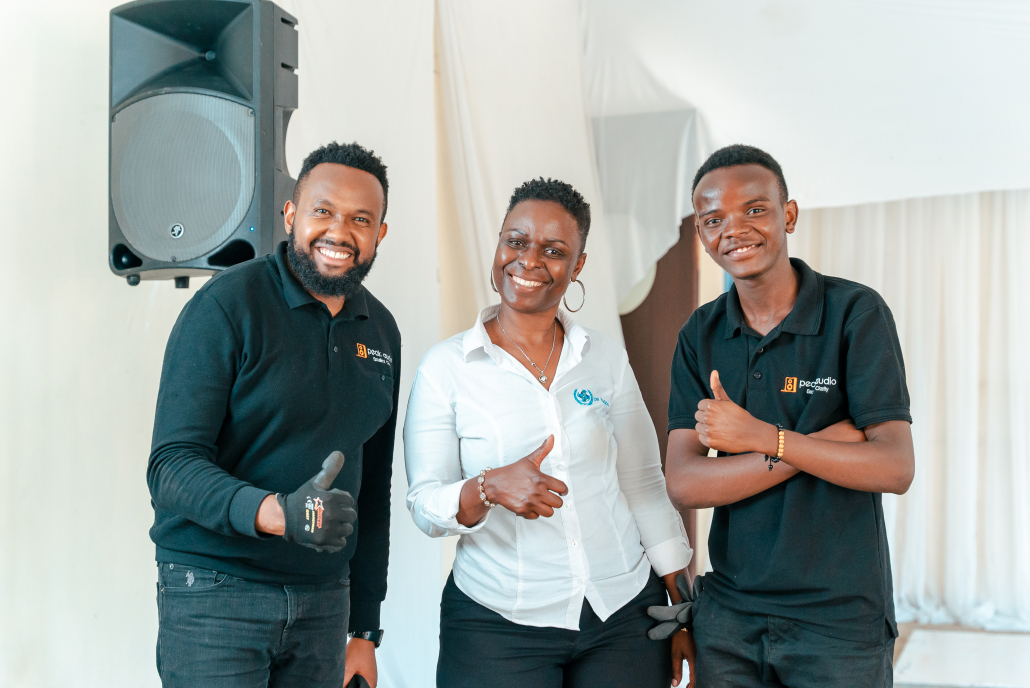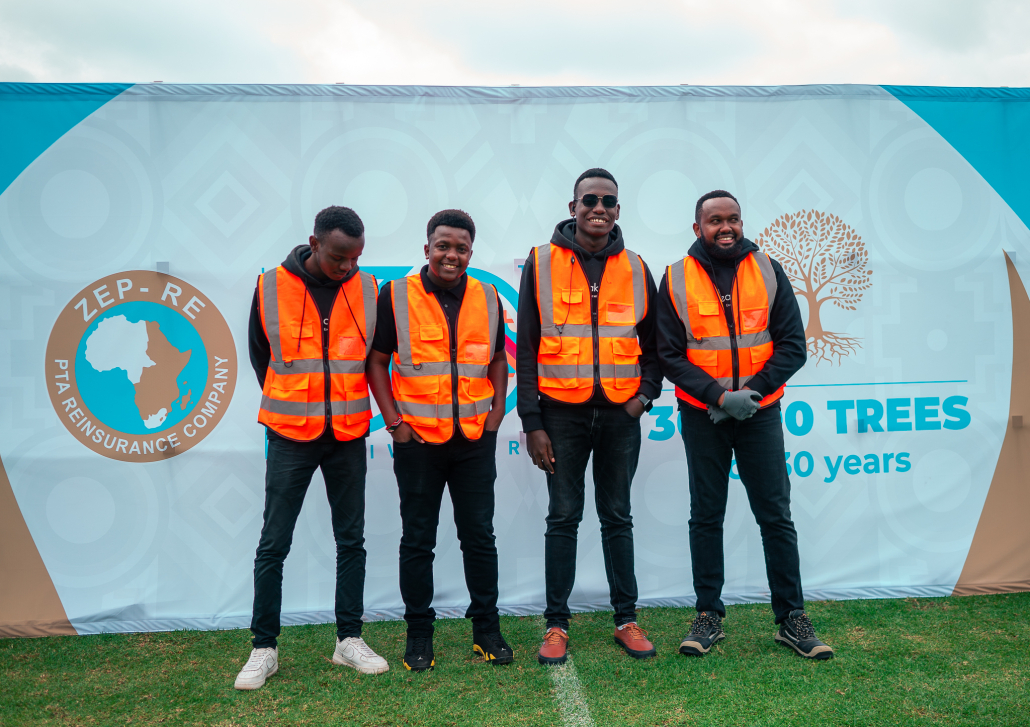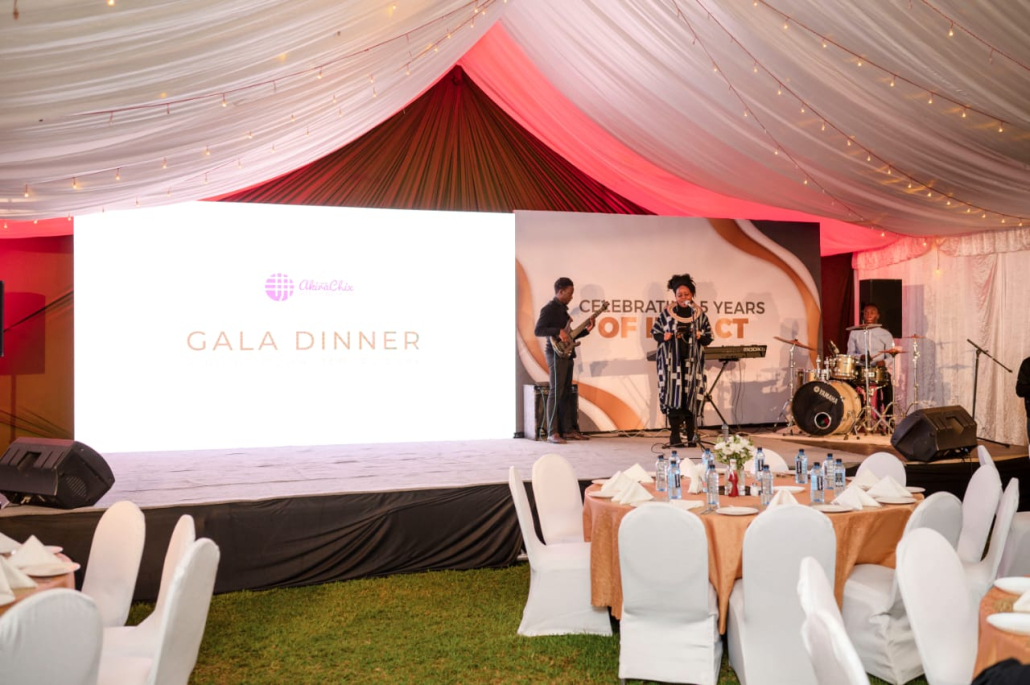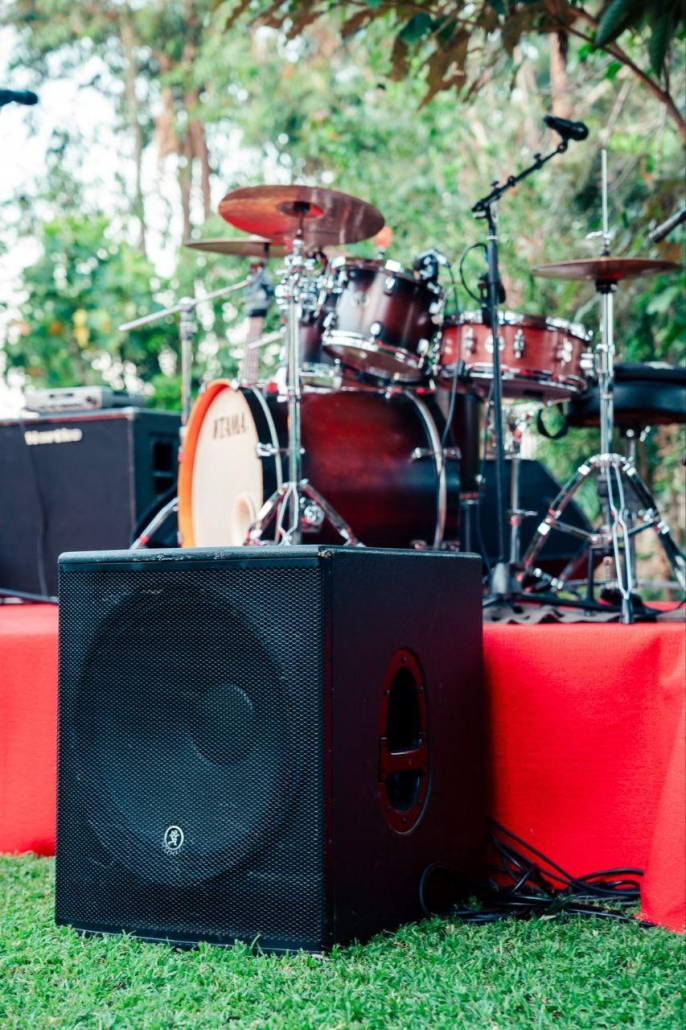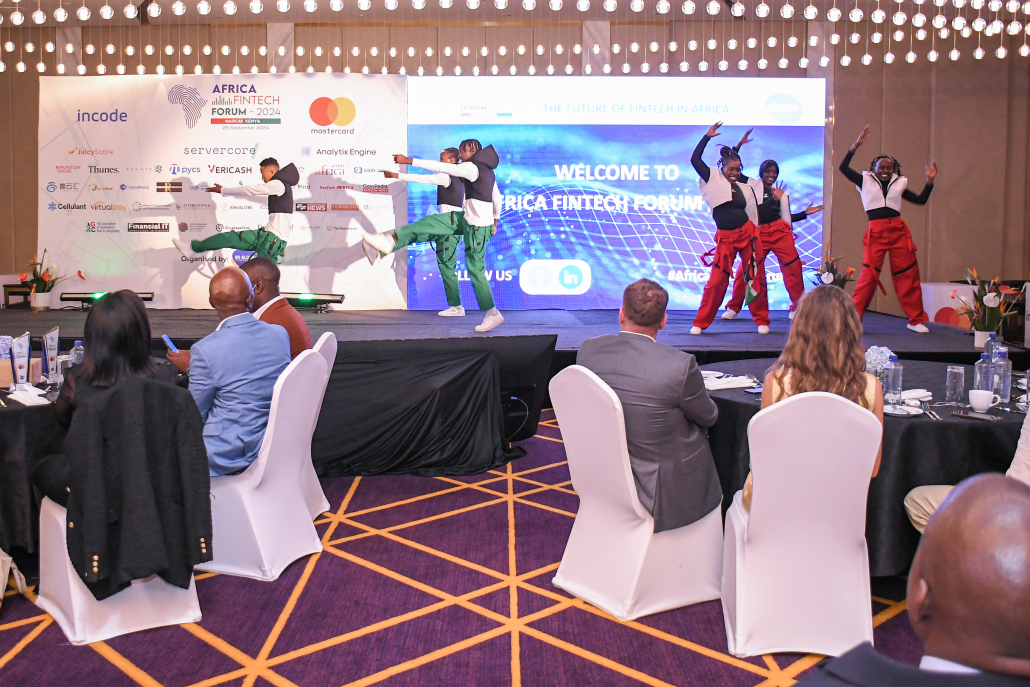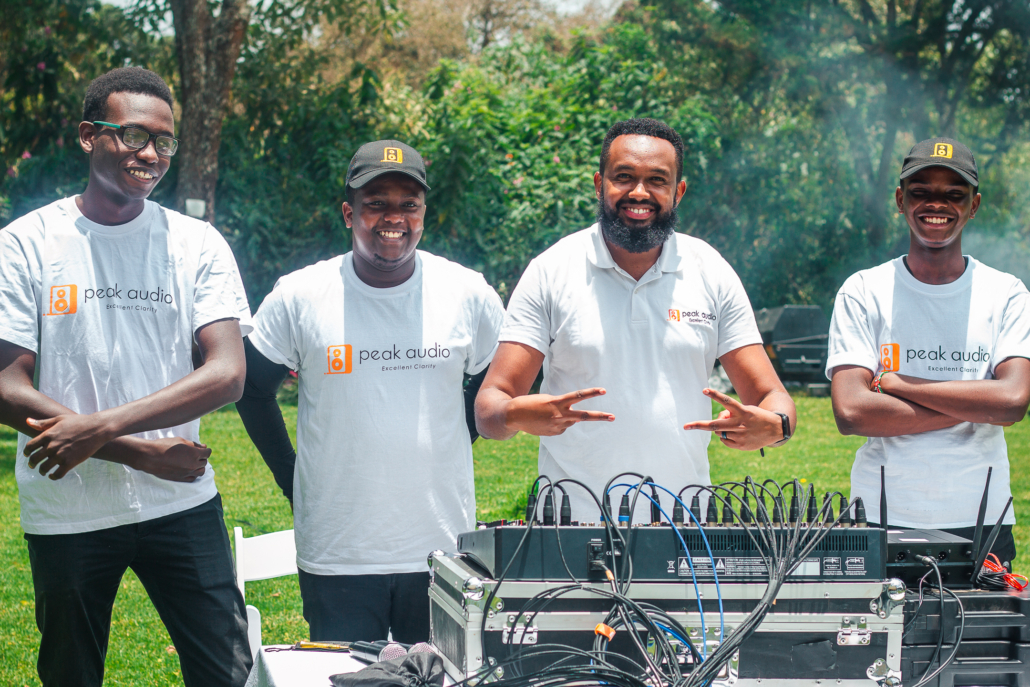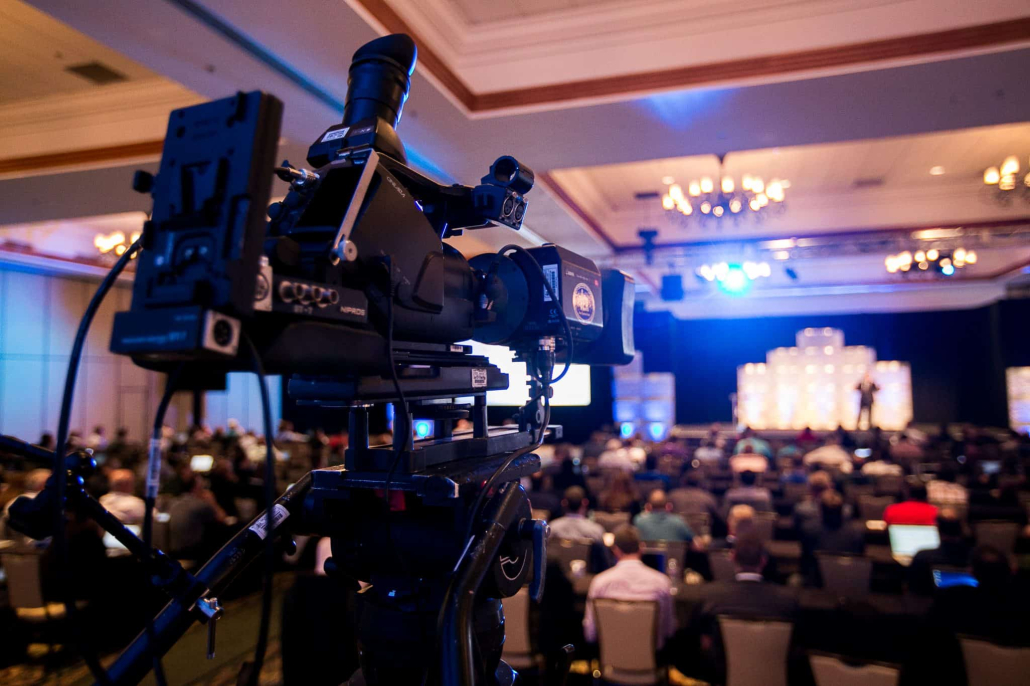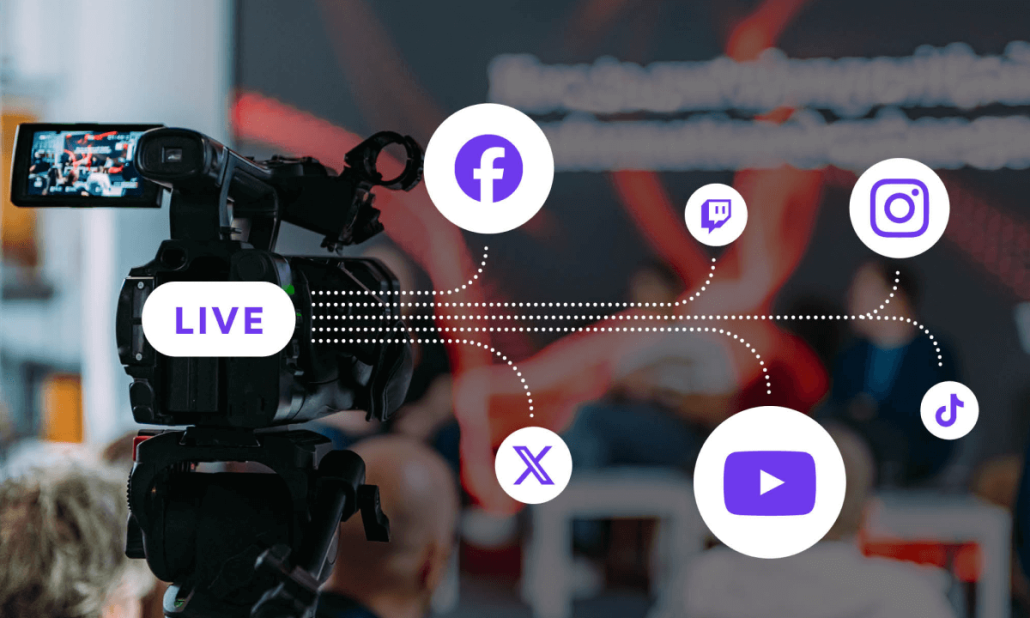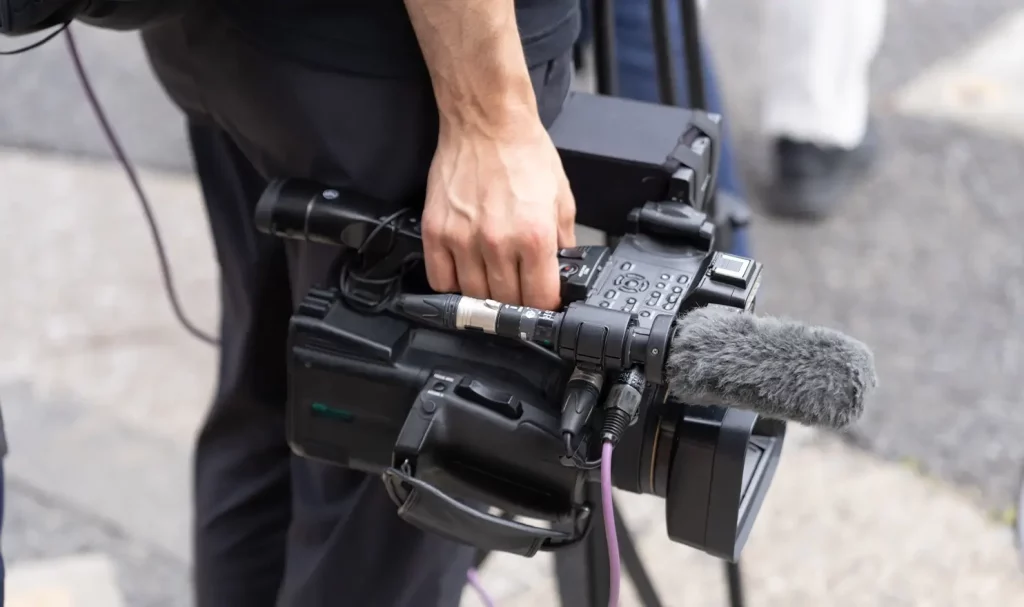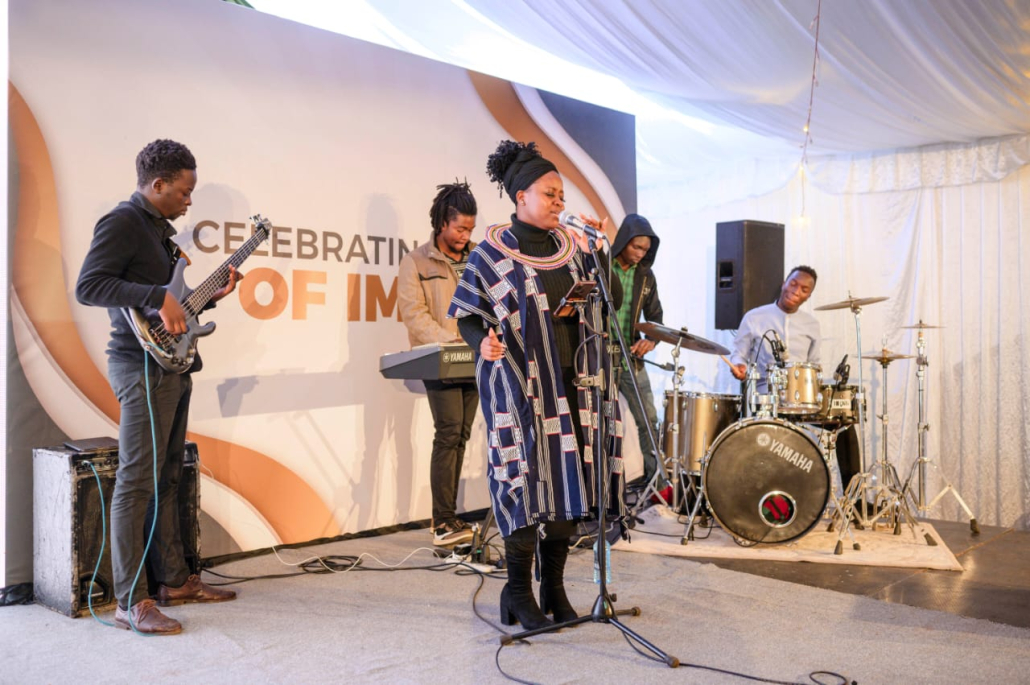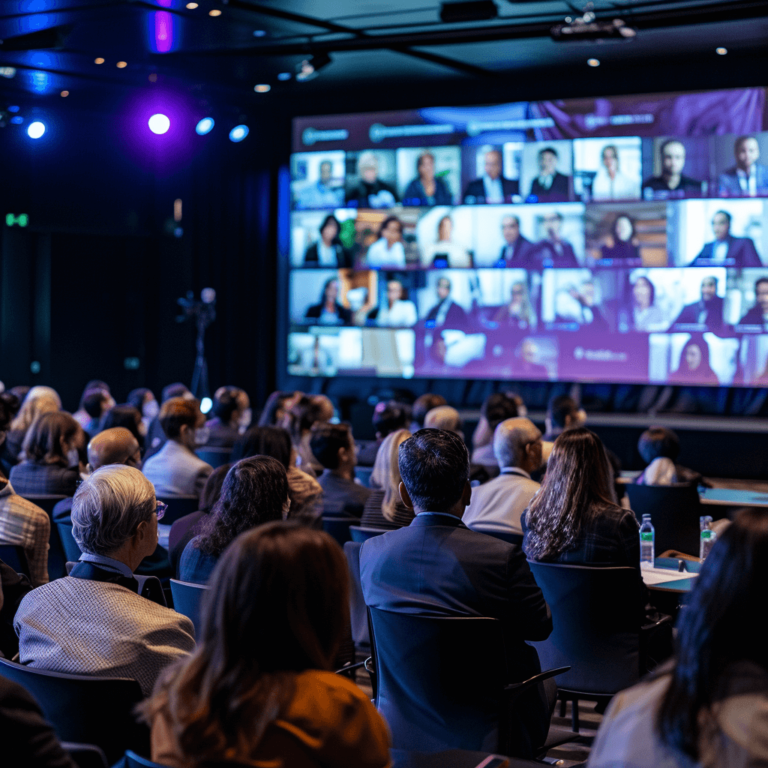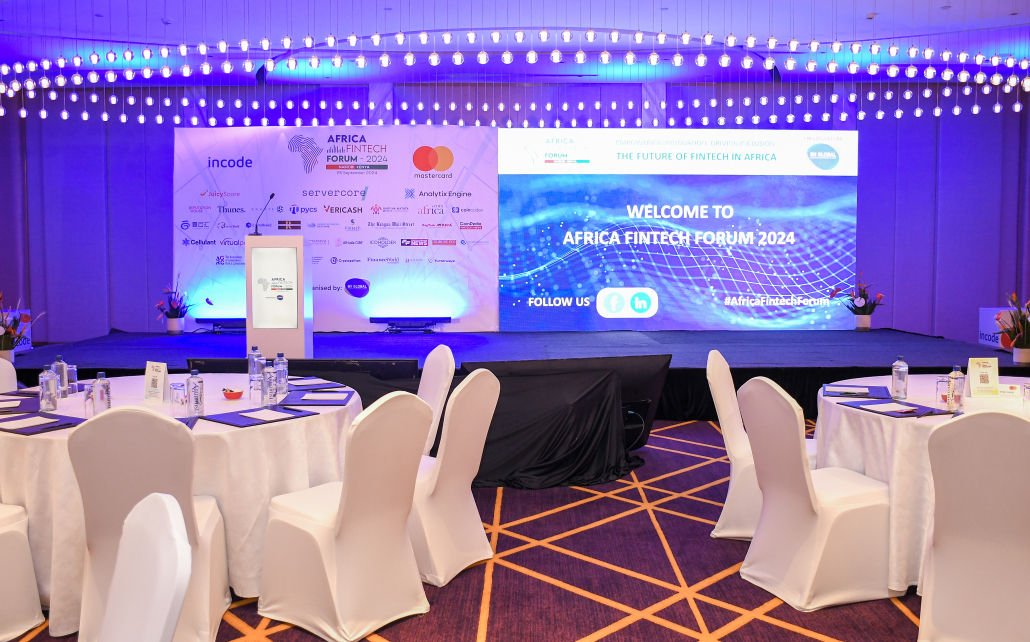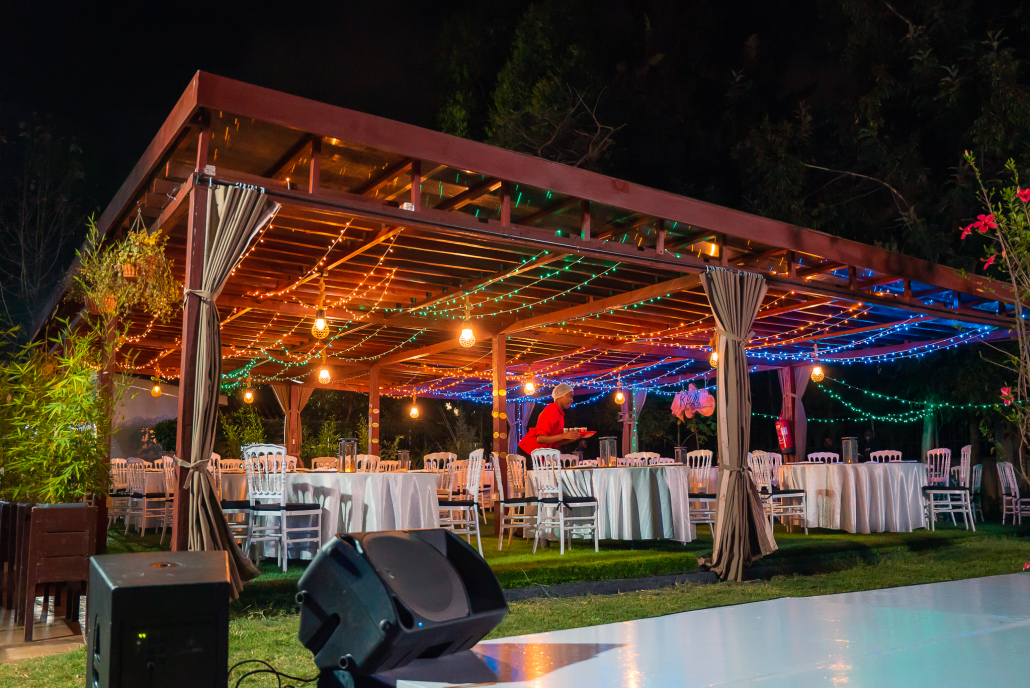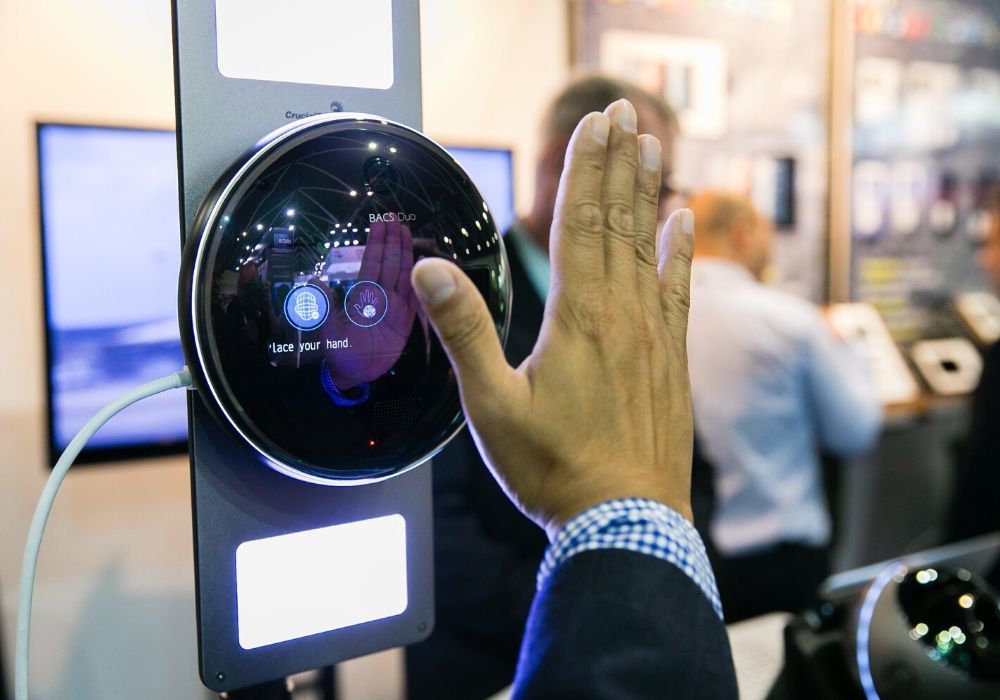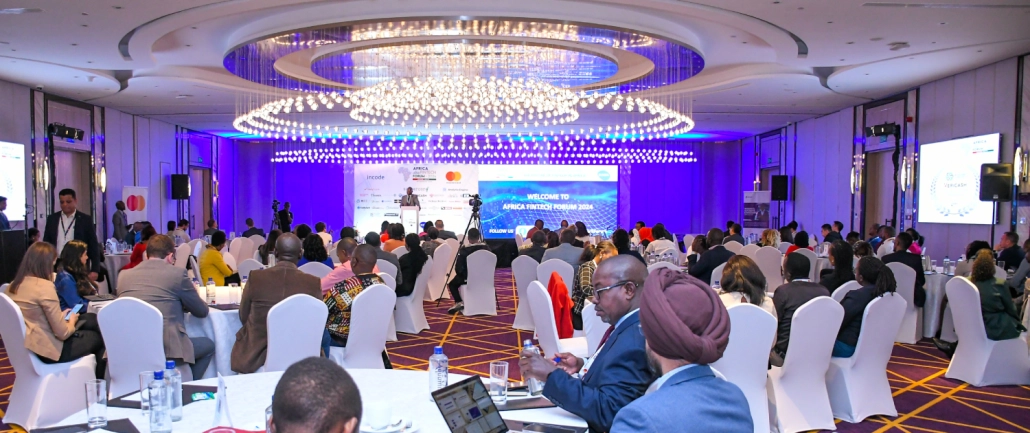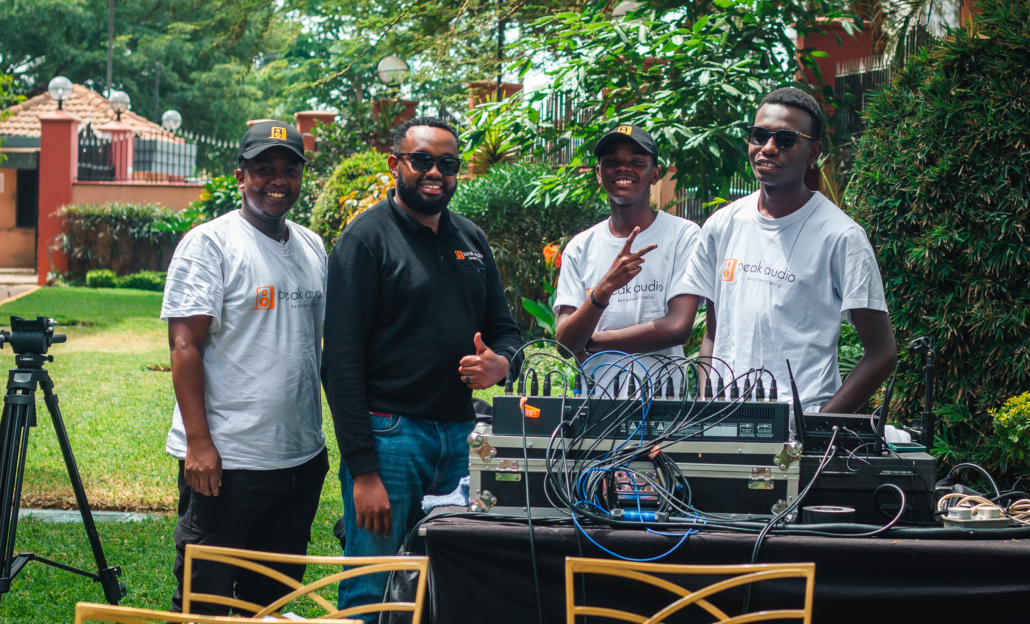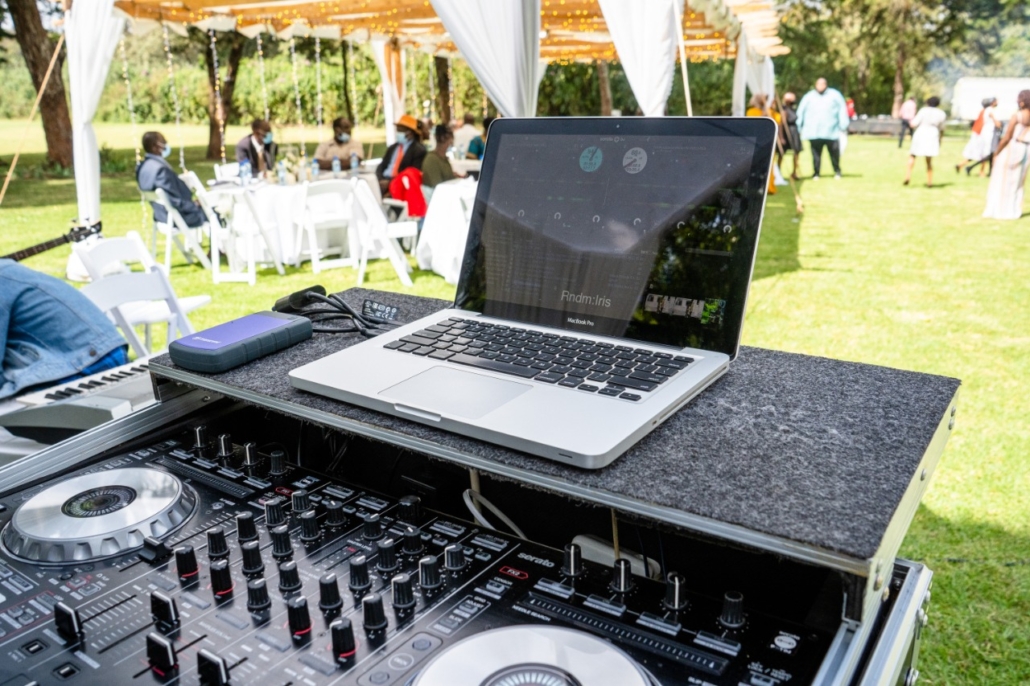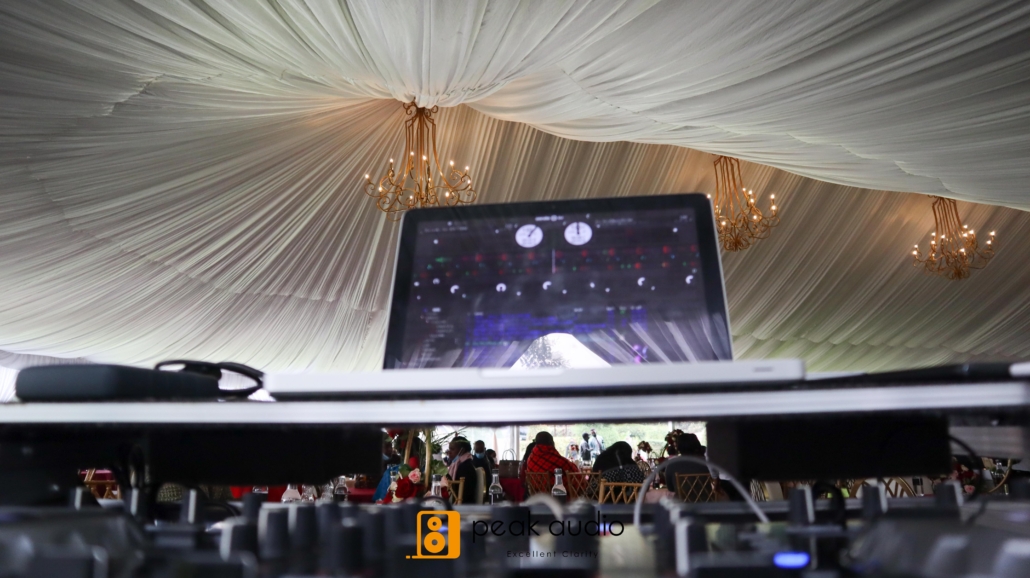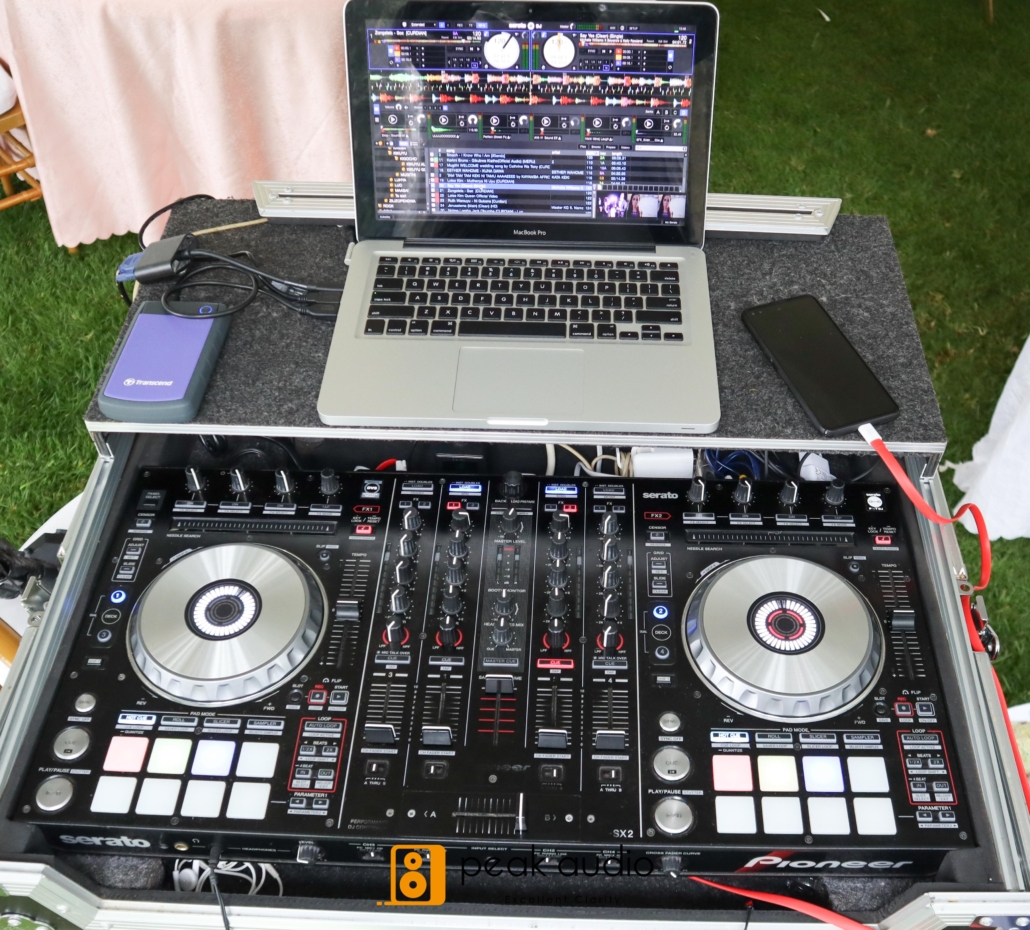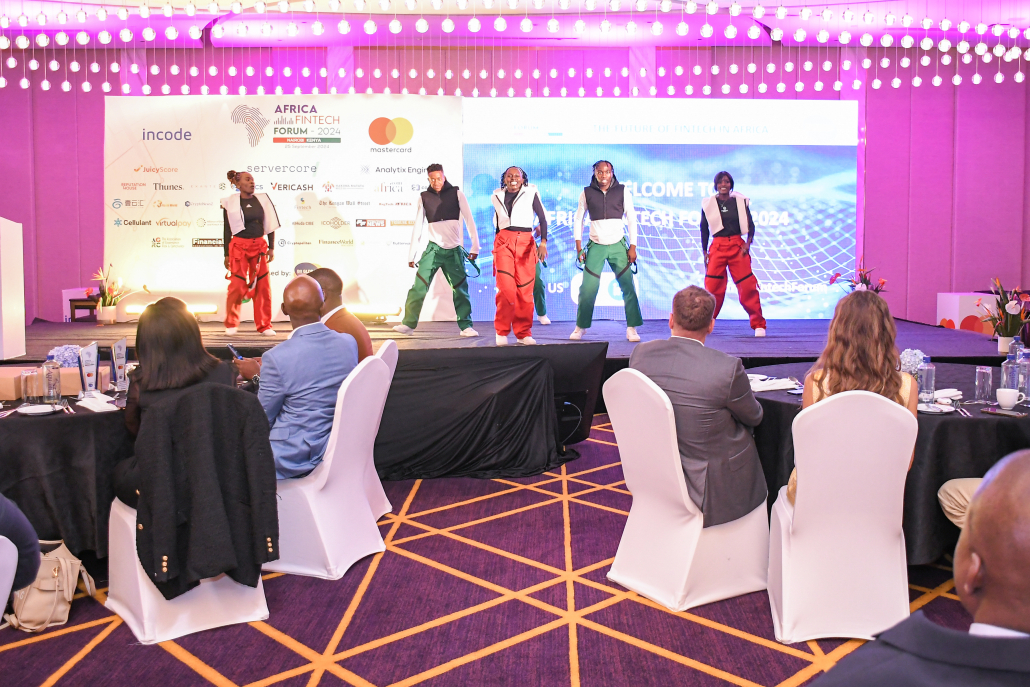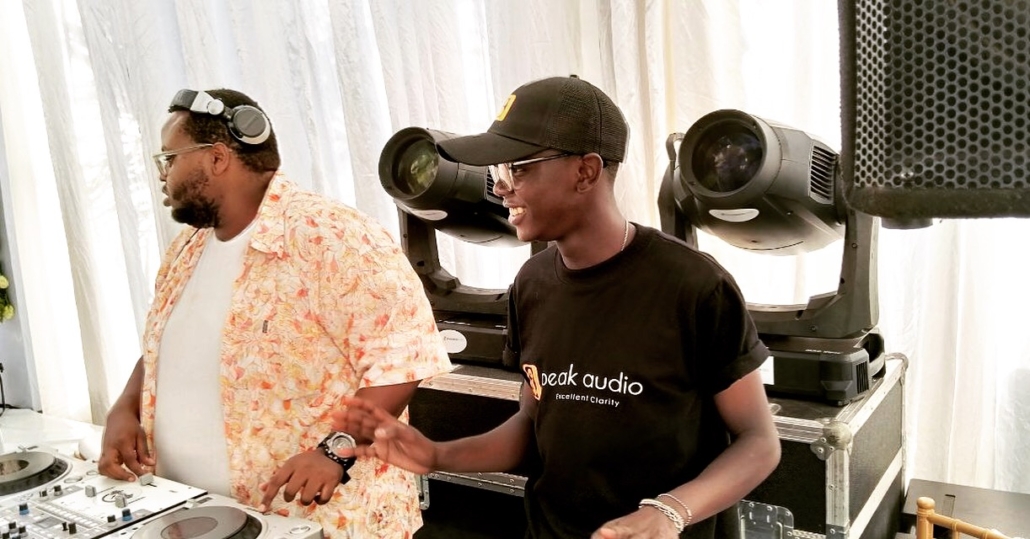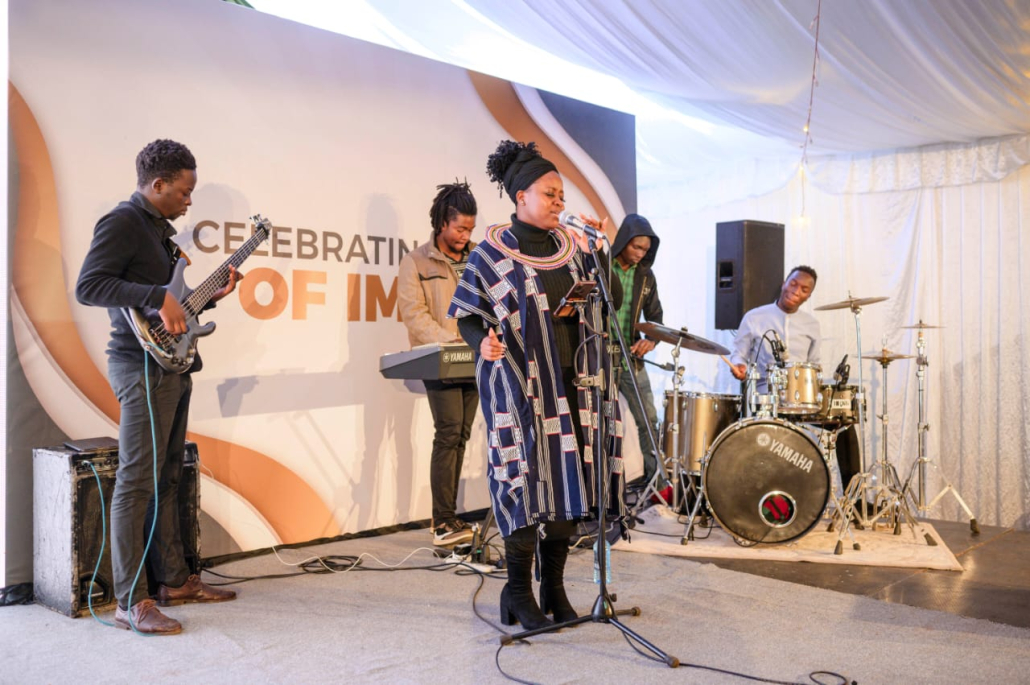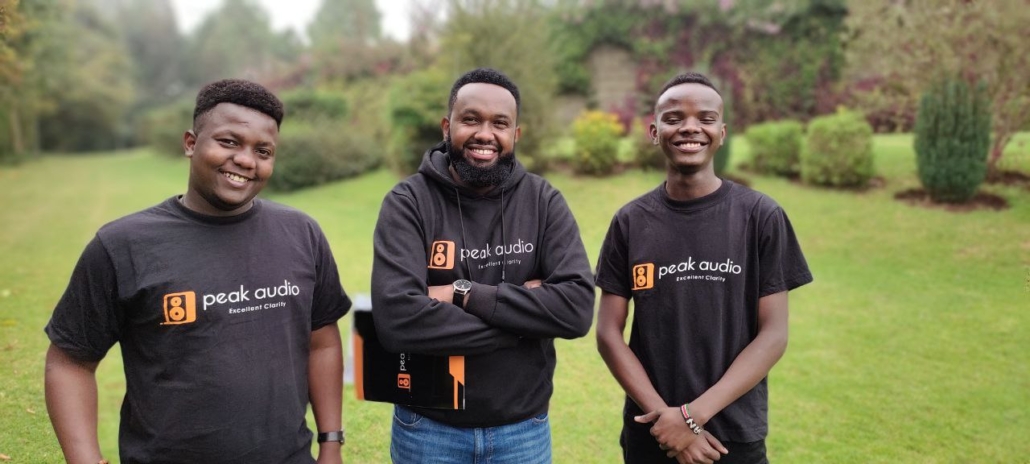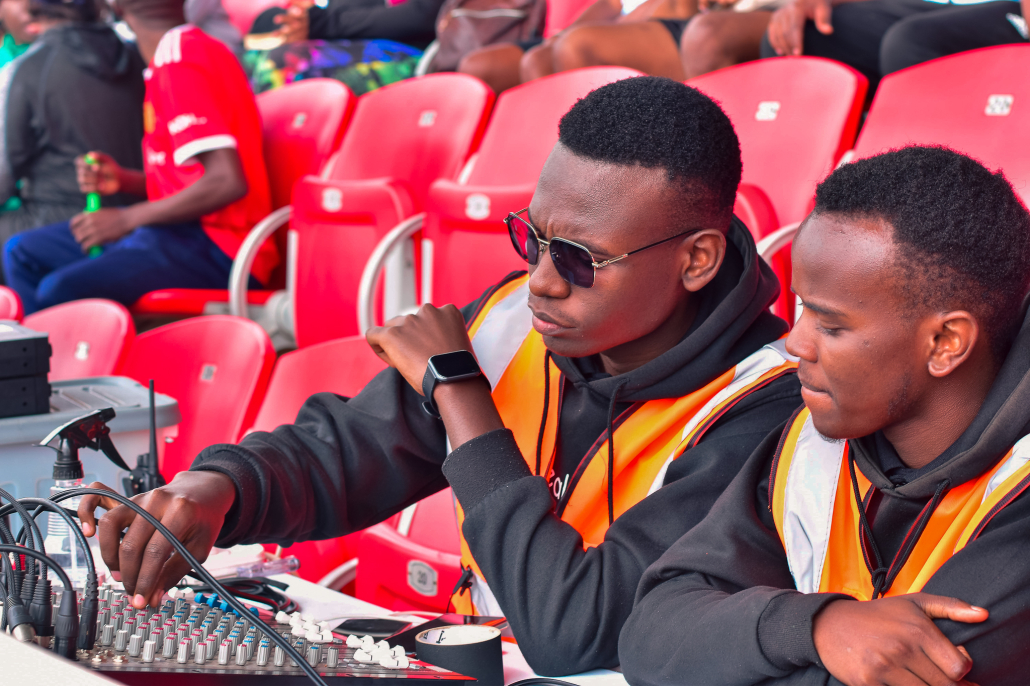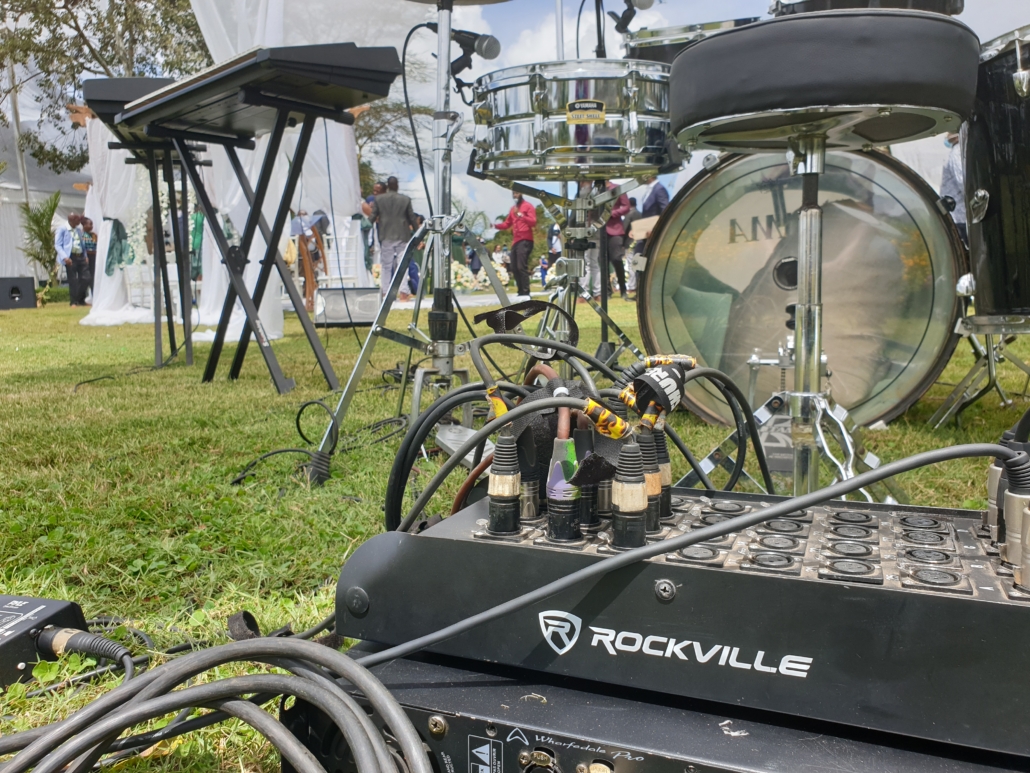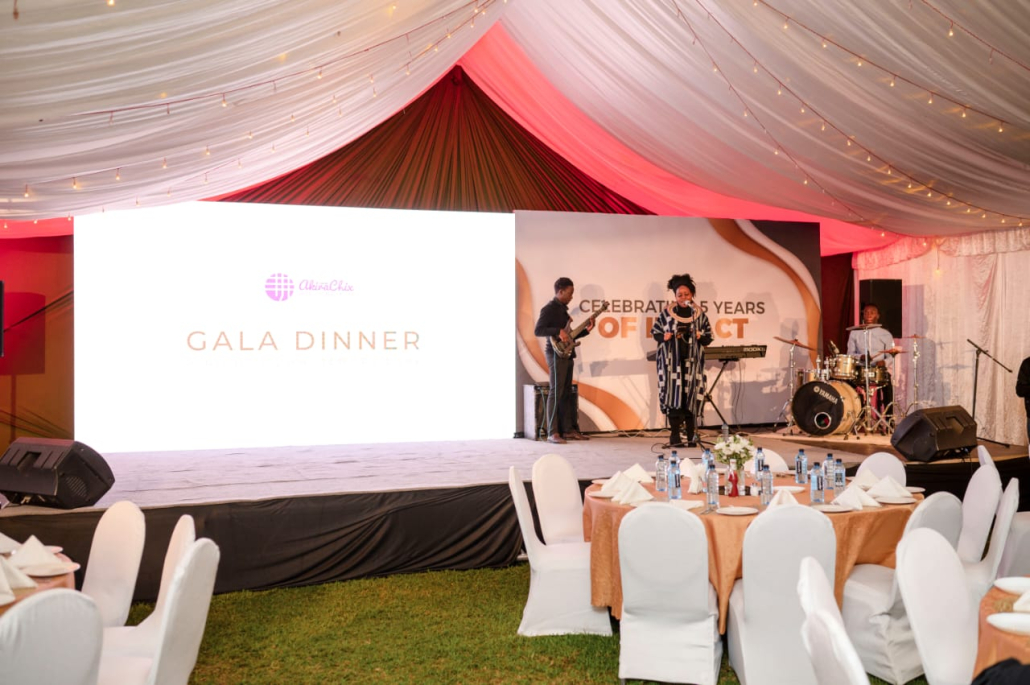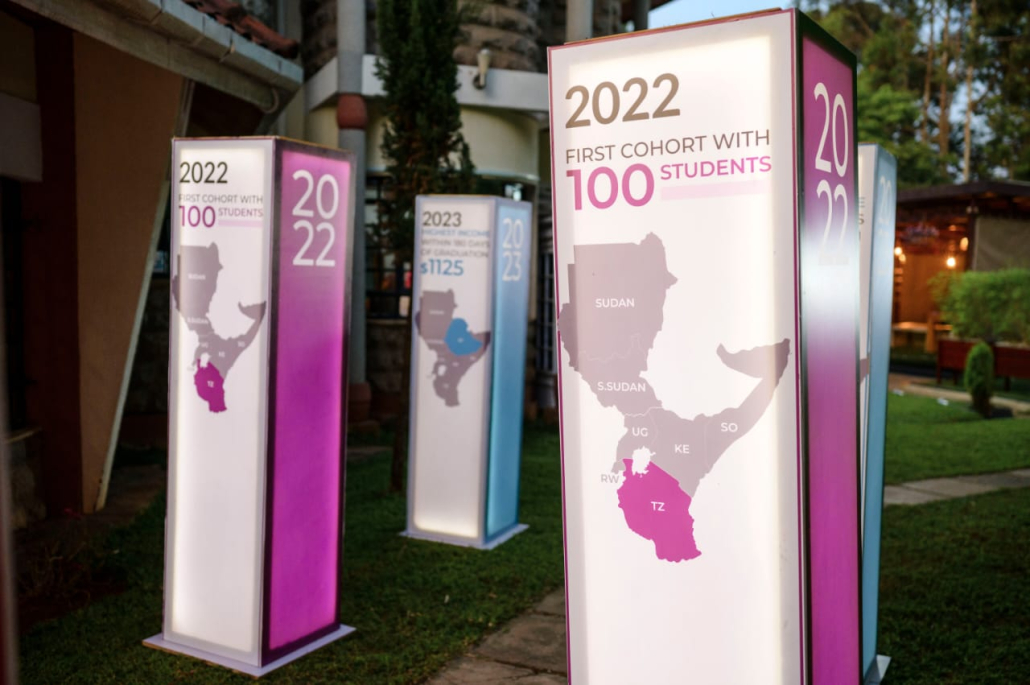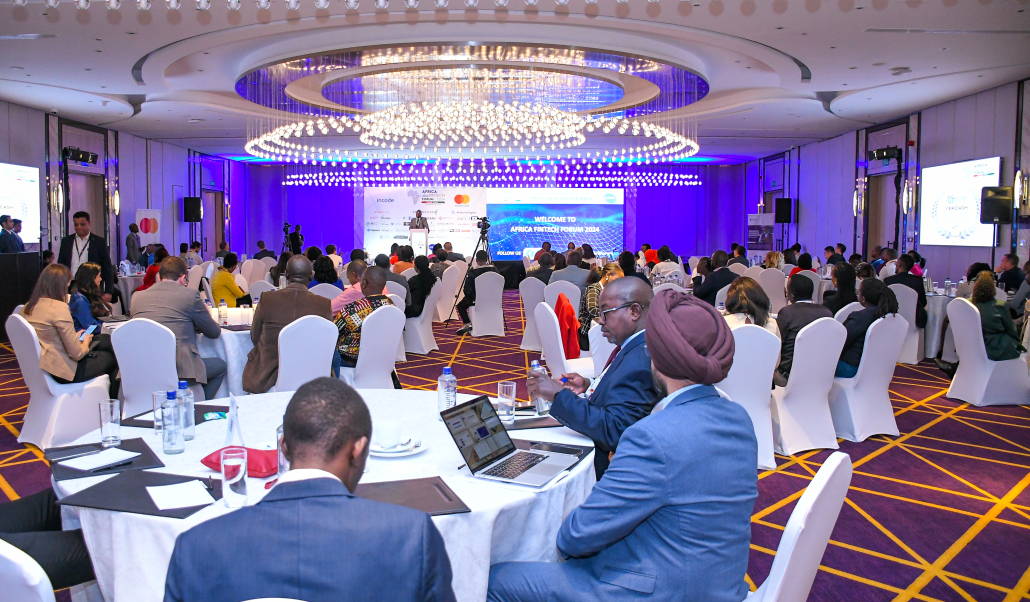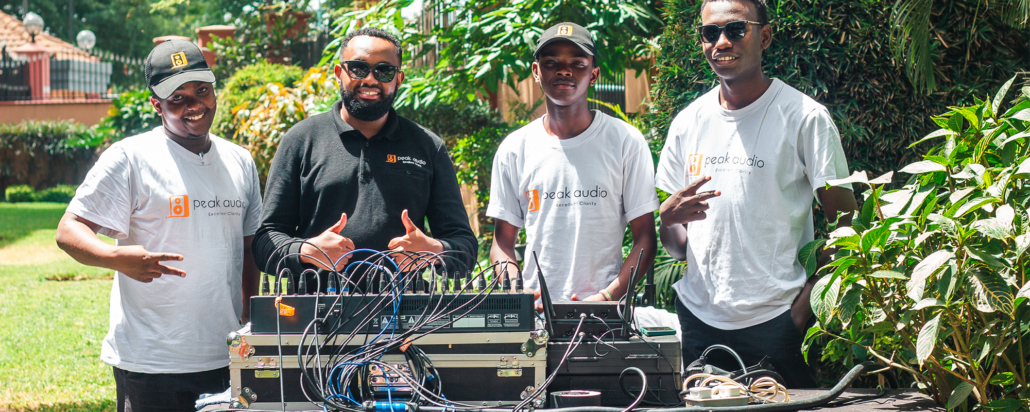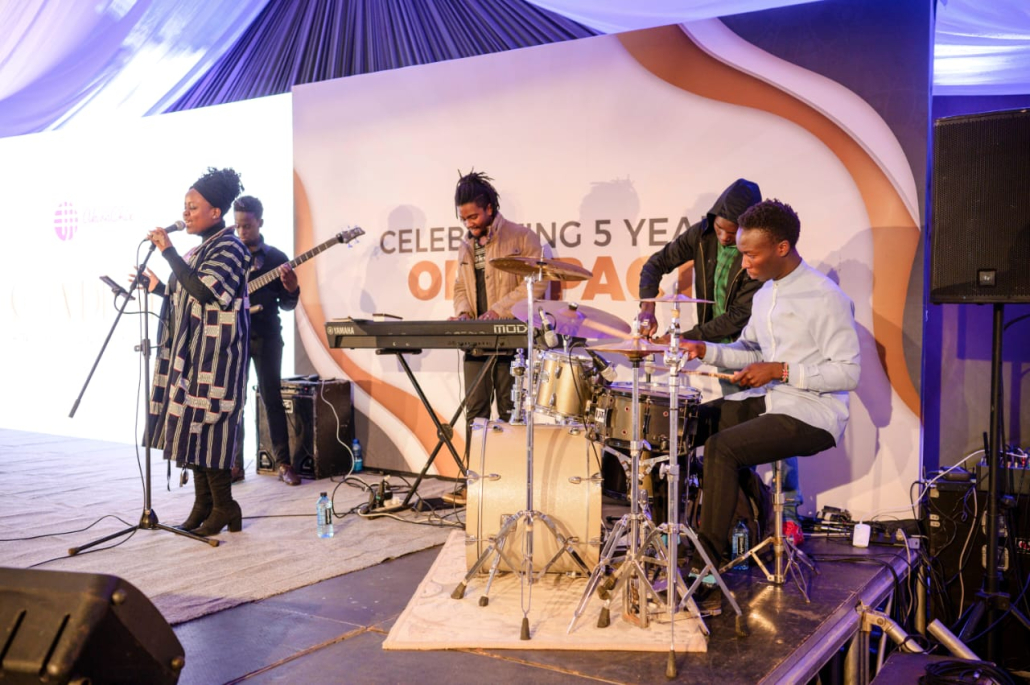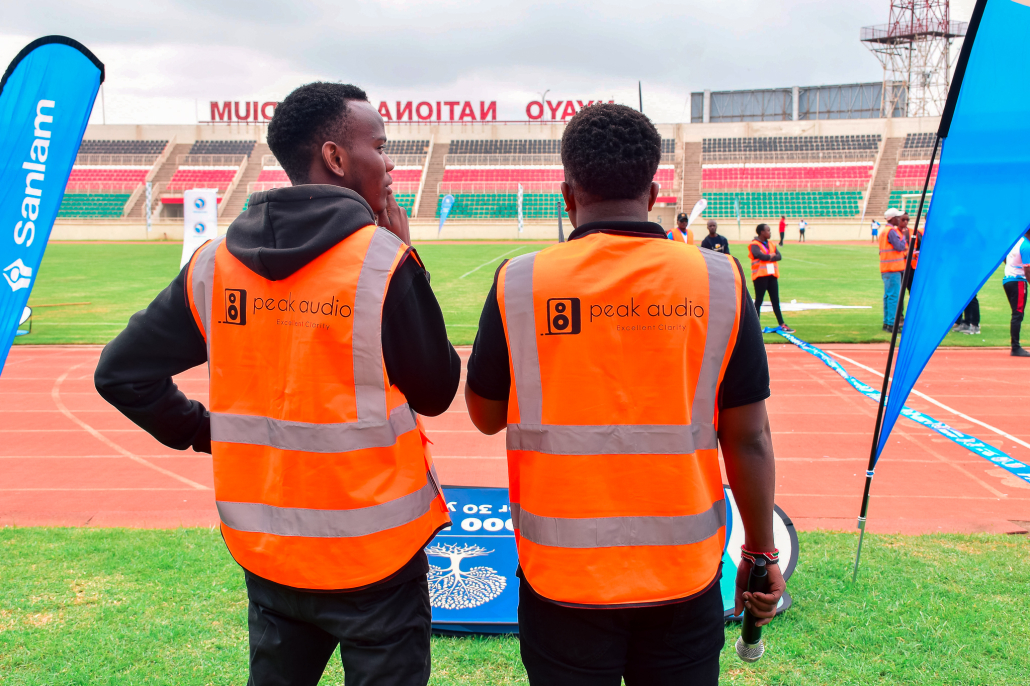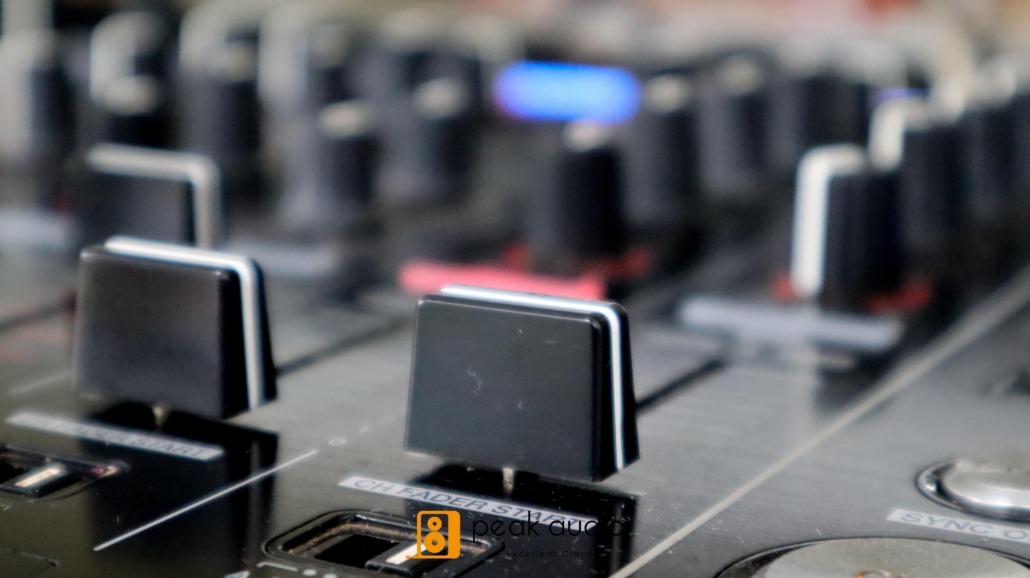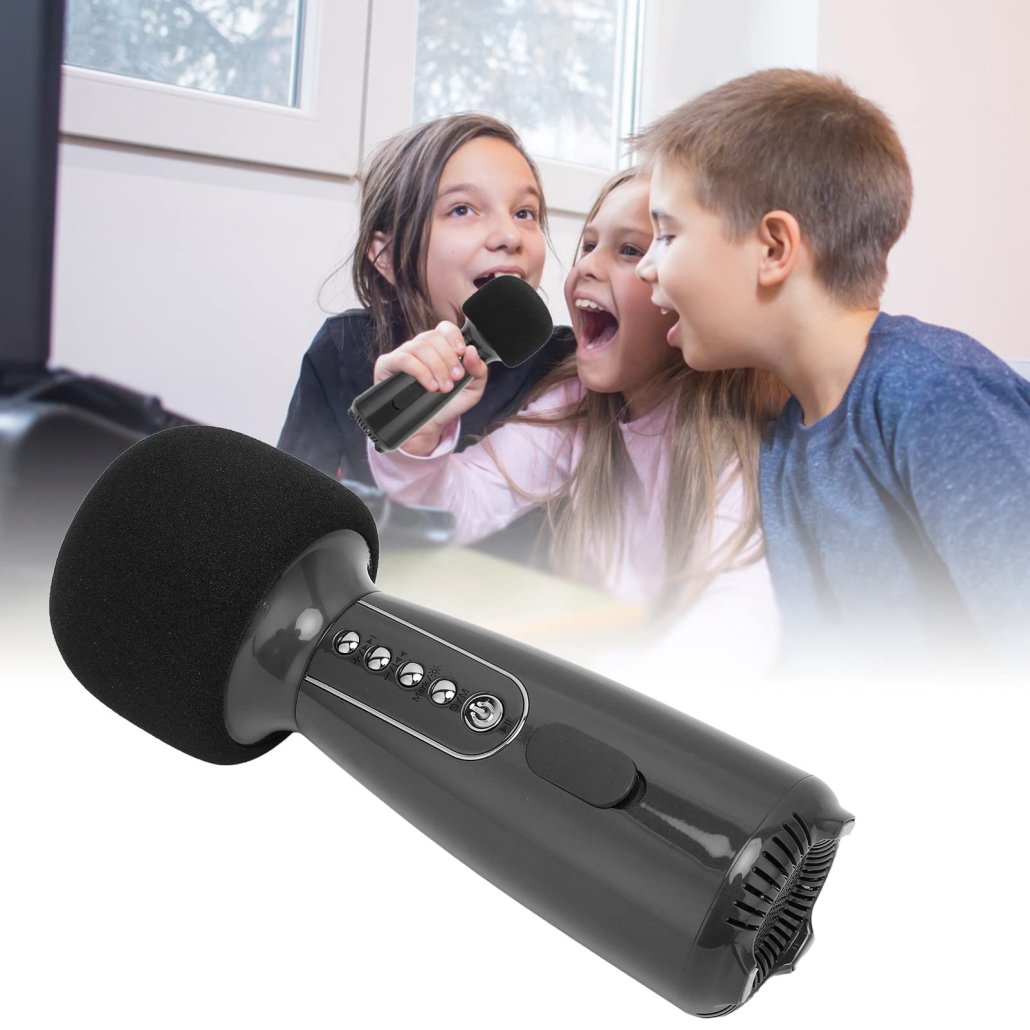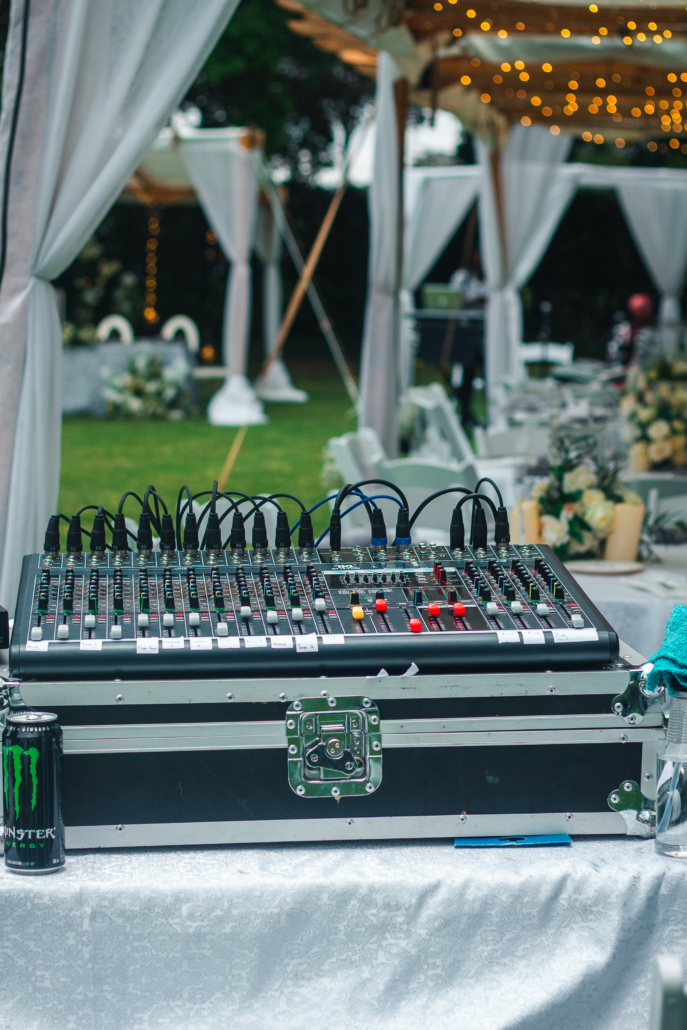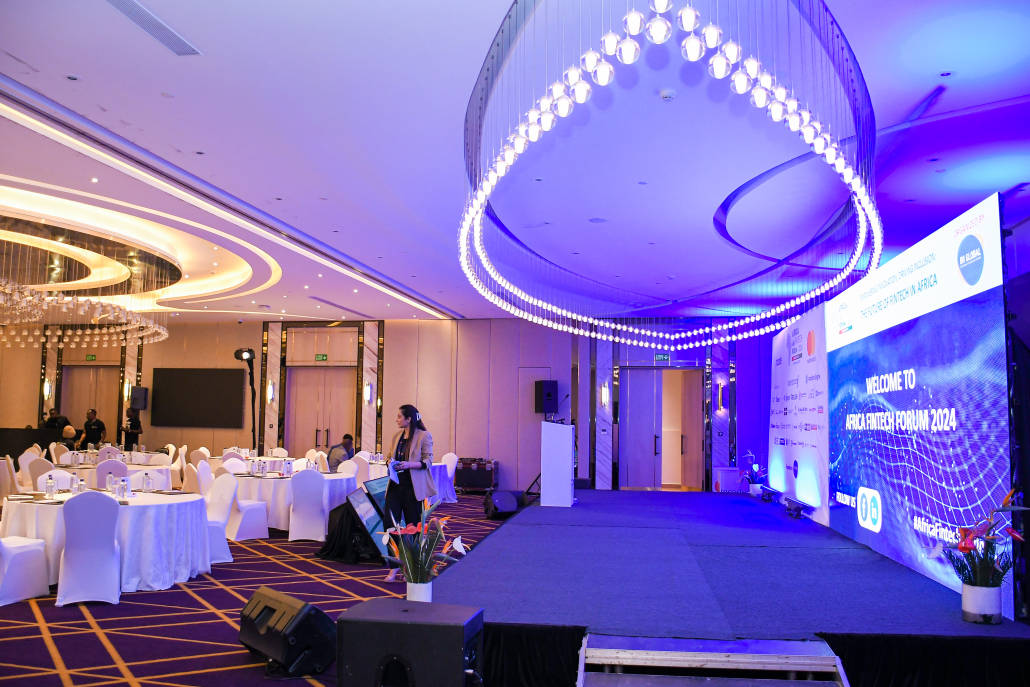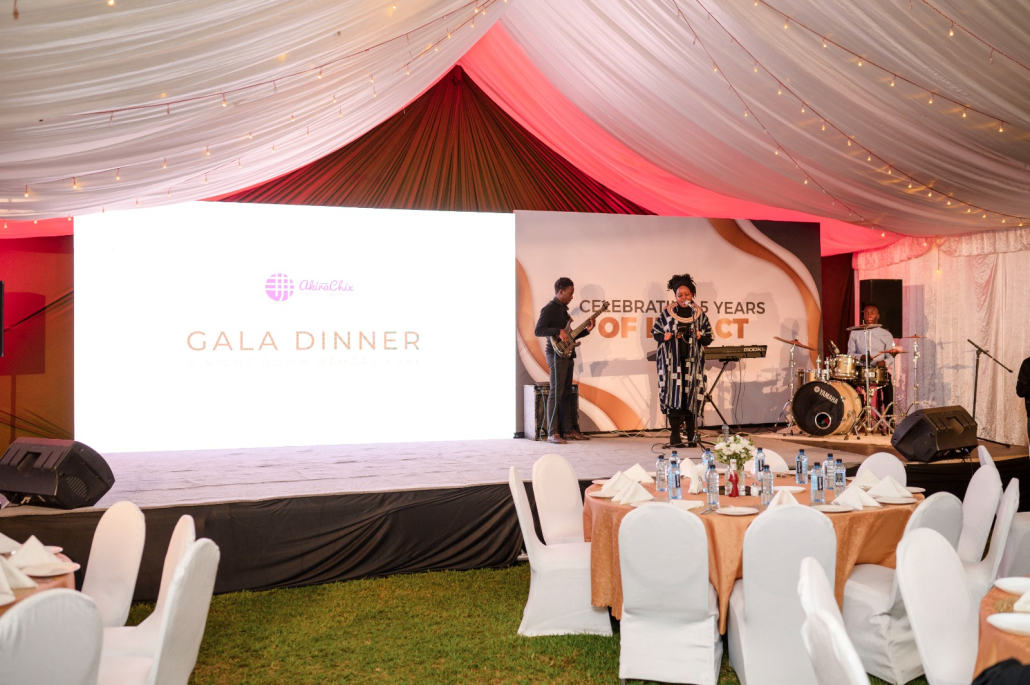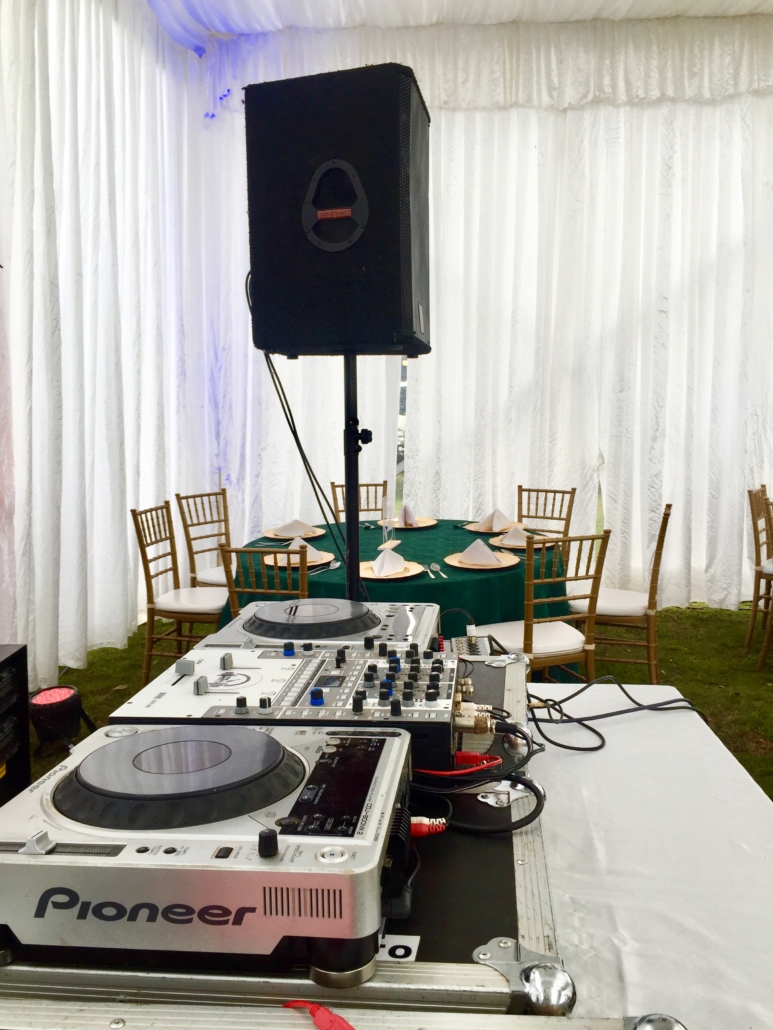How to Maintain Your AV Equipment in Kenya : Proven Care & Maintenance Tips
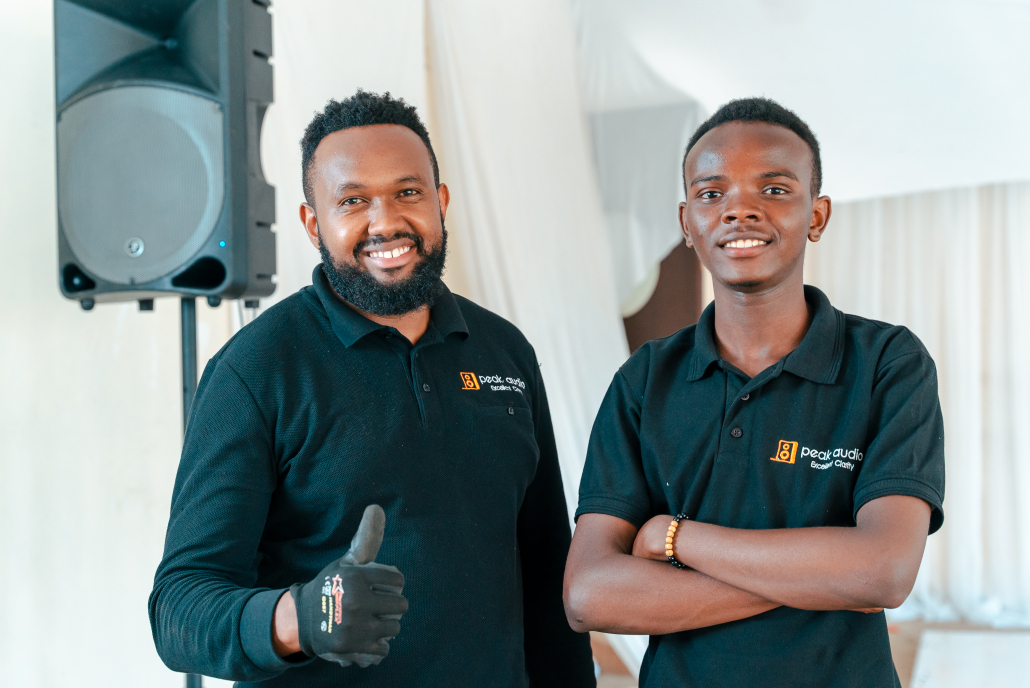
How to Maintain Your AV Equipment in Kenya
Audio Visual (AV) equipment plays a central role in the success of events, whether it’s a corporate conference, a wedding, or a live concert. From crystal-clear sound systems and microphones to projectors, LED screens, and lighting setups, AV technology ensures that messages are delivered effectively, atmospheres are created, and audiences remain engaged throughout the experience. In today’s event landscape in Kenya, where professionalism and high standards are increasingly expected, reliable AV systems are no longer optional—they are essential for creating impactful moments.
However, owning or renting AV equipment is only the first step; maintaining it is what guarantees consistent performance. Proper care and regular maintenance not only extend the lifespan of the equipment but also minimize the risk of technical glitches that could disrupt an event. Given the significant investment AV systems require, routine upkeep translates directly into long-term cost savings by reducing the need for frequent repairs or replacements. Moreover, well-maintained equipment retains its quality, ensuring that every event—big or small—delivers an impressive and seamless experience.
At Peak Audio, we understand the value of keeping your AV equipment in top condition. Beyond offering cutting-edge solutions for events, we also emphasize equipment care and maintenance as part of our commitment to excellence. Our expertise ensures that clients enjoy not just world-class event setups but also the peace of mind that comes with knowing their equipment is properly maintained for long-term use. By choosing Peak Audio, you gain a trusted partner who helps you protect your investment while delivering unforgettable event experiences in Kenya.
1. Understanding the Importance of AV Equipment Maintenance

How to Maintain Your AV Equipment in Kenya
Audio-visual (AV) equipment plays a critical role in delivering high-quality experiences at corporate events, conferences, and other professional gatherings. These systems are more than just tools—they represent a significant investment in your event’s success and your organization’s professional image. Proper maintenance ensures that AV equipment continues to perform reliably, prevents costly disruptions, and maximizes the lifespan of your assets.
1.1 Why AV Equipment is an Investment, Not Just a Tool
-
AV systems, including speakers, projectors, lighting rigs, and control consoles, are expensive and technically sophisticated. Treating them as mere tools can lead to underestimating their value.
-
Well-maintained equipment supports consistent, high-quality audio and visual performance, which directly influences audience engagement and event success.
-
Investing in maintenance protects the equipment’s functionality and preserves the financial outlay made for advanced AV systems.
1.2 The Risks of Neglecting Maintenance
-
Unexpected Downtime: Failure to perform regular checks can result in equipment malfunction during events, causing interruptions or cancellations.
-
Costly Repairs: Minor issues left unaddressed may escalate into expensive repairs or full component replacements.
-
Poor Event Experience: Malfunctioning AV equipment leads to subpar sound, visuals, and lighting, damaging audience engagement and brand perception.
-
Neglecting routine maintenance compromises reliability, which can affect not only individual events but also the organization’s reputation for professional execution.
1.3 Benefits of Consistent Care
-
Durability: Regular inspections, cleaning, and calibration extend the life of AV equipment, protecting your investment over the long term.
-
Reliability: Properly maintained systems function consistently, reducing the likelihood of technical failures during critical moments.
-
Superior Event Outcomes: Maintenance ensures optimal audio clarity, visual sharpness, and lighting effects, elevating the audience experience and creating memorable events.
-
By investing time and resources in preventive care, organizations maximize both the performance and lifespan of their AV technology.
AV equipment is a significant investment that goes beyond simple functionality. Neglecting its care can result in equipment failure, high repair costs, and compromised event quality, while consistent maintenance ensures durability, reliability, and superior audience experiences. By prioritizing regular upkeep, organizations safeguard their AV assets and ensure every event runs smoothly, leaving a lasting impression on attendees.
2. Regular Cleaning and Handling Practices
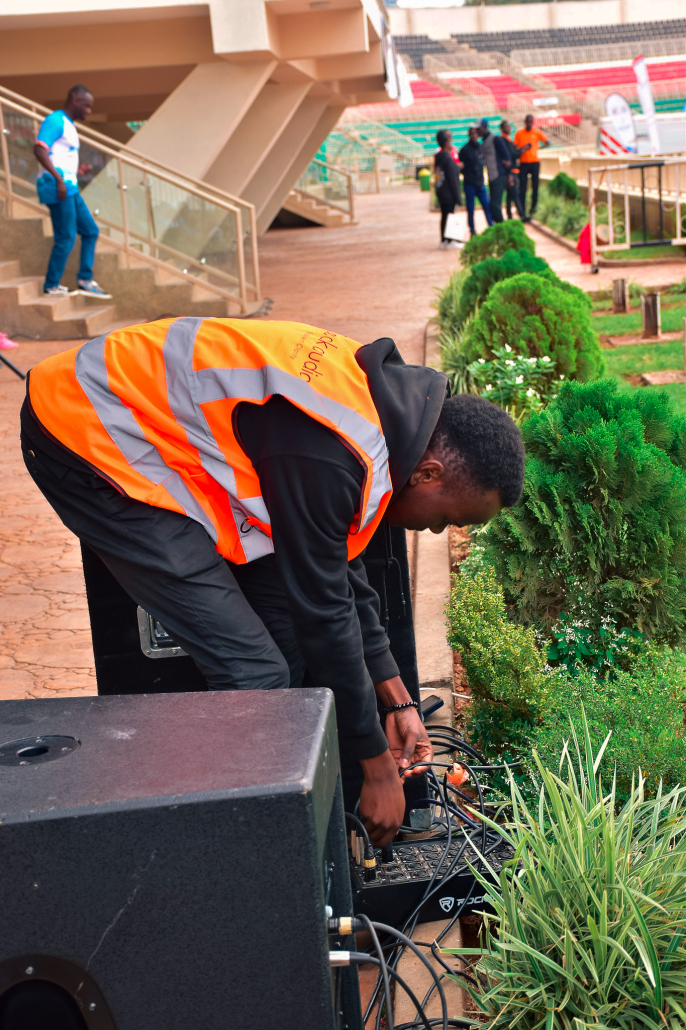
How to Maintain Your AV Equipment in Kenya
Proper cleaning and careful handling are essential for maintaining AV equipment in peak condition. Dust, spills, rough handling, and improper storage can compromise performance, shorten lifespan, and lead to costly repairs. Implementing routine care practices ensures your equipment remains reliable, functional, and ready for every event.
2.1 Proper Dusting, Wiping, and Safe Cleaning Techniques
-
Regularly remove dust from speakers, projectors, mixers, and lighting fixtures using soft, dry cloths or anti-static brushes.
-
Use gentle cleaning solutions designed for electronics when necessary, avoiding harsh chemicals that can damage surfaces or components.
-
Clean control panels, connectors, and display screens carefully to maintain clarity and prevent interference with electrical contacts.
-
Maintaining a dust-free environment prevents overheating, static build-up, and component wear, ensuring consistent performance.
2.2 Avoiding Liquid Damage and Handling Cables Correctly
-
Keep liquids away from AV equipment to prevent short circuits, corrosion, or permanent damage.
-
When using cleaning solutions, apply them to cloths rather than spraying directly onto devices.
-
Properly coil and store cables, avoiding kinks or sharp bends that can break internal wires.
-
Label and organize cables to prevent confusion, tangling, and accidental disconnections during setup or teardown.
-
Correct handling reduces wear, prevents malfunctions, and extends the operational life of critical components.
2.3 Safe Storage to Prevent Wear and Tear
-
Store AV equipment in padded, dust-free cases or racks when not in use.
-
Ensure items are placed in stable, dry, and ventilated areas to avoid exposure to humidity, temperature extremes, or physical impact.
-
Keep delicate components, such as microphones, lenses, and connectors, in separate protective compartments to prevent scratches and deformation.
-
Organized storage not only preserves equipment integrity but also improves efficiency during setup and transport.
Consistent cleaning, careful handling, and proper storage are vital practices to maintain AV equipment longevity and reliability. By protecting devices from dust, liquids, and physical damage, organizations can reduce downtime, prevent costly repairs, and ensure each event is executed with flawless audio-visual quality. A disciplined maintenance routine keeps AV assets performing at their best, safeguarding both investment and event success.
3. Conducting Routine Inspections

How to Maintain Your AV Equipment in Kenya
Routine inspections are a critical part of AV equipment maintenance. Even the most advanced systems can fail if small issues go unnoticed. By performing regular checks before and after each event, you can identify potential problems early, prevent downtime, and ensure that all equipment functions optimally when it matters most.
3.1 What to Check Before and After Each Use
-
Cables and Connectors – Inspect for fraying, exposed wires, loose plugs, and bent pins to avoid signal loss or short circuits.
-
Microphones and Audio Devices – Test microphones, mixers, and amplifiers to ensure clear sound without distortion, crackling, or interference.
-
Projectors and Displays – Check lamp brightness, lens cleanliness, and screen resolution settings to guarantee crisp visuals.
-
Speakers and Sound Systems – Examine for physical damage, vibrations, or loose mounts that could affect audio quality.
-
Power Supply and Batteries – Verify that adapters, surge protectors, and batteries are functioning correctly to prevent mid-event failures.
Regular pre- and post-event inspections help catch issues before they escalate, ensuring reliability for every setup.
3.2 Identifying Early Signs of Wear and Damage
-
Look for physical deterioration such as cracks, rust, or worn connectors.
-
Listen for audio inconsistencies like hissing, buzzing, or uneven sound output.
-
Observe visual anomalies in displays, including flickering, dimming, or color inconsistencies.
-
Recognize cable fatigue and loose solder joints before they cause equipment failure.
-
Early detection prevents small problems from becoming major repairs, reducing costs and downtime.
3.3 Keeping a Maintenance Checklist for Accountability
-
Maintain a standardized checklist for each equipment type, covering all key components and functions.
-
Record the date, inspector, and results of each inspection for accountability and tracking.
-
Note any repairs, replacements, or issues observed for future reference.
-
A checklist ensures systematic inspections, helps identify recurring problems, and improves overall equipment management.
-
It also serves as a reference for technicians, enabling faster troubleshooting and consistent maintenance standards.
Conducting routine inspections is essential for the longevity and reliability of AV equipment. By systematically checking all components, identifying early signs of wear, and maintaining detailed records, organizations can prevent unexpected failures, reduce repair costs, and guarantee high-quality performance at every event. A disciplined inspection routine forms the backbone of effective AV equipment maintenance, ensuring seamless audio-visual experiences for every audience.
4. Proper Storage and Transportation

How to Maintain Your AV Equipment in Kenya
Proper storage and careful transportation are essential for preserving the lifespan and performance of AV equipment. Even high-quality devices can be damaged if they are exposed to dust, moisture, or physical shocks. Implementing structured storage solutions and safe transport practices ensures that equipment remains in optimal condition and reduces the risk of costly repairs or replacements.
4.1 Storing Equipment in Protective Cases and Controlled Environments
-
Protective Cases – Use hard or padded cases for microphones, cameras, mixers, and projectors to shield them from dust, impact, and moisture.
-
Controlled Environments – Store equipment in temperature- and humidity-controlled rooms to prevent heat damage, condensation, or corrosion.
-
Organized Shelving – Keep AV gear neatly arranged, avoiding stacking heavy items that could crush or deform delicate devices.
-
Labeling and Inventory – Clearly label cases and shelves for easy identification and tracking of all equipment.
-
Regular Checks – Inspect storage areas periodically to ensure environmental conditions remain safe and protective measures are intact.
Effective storage protects equipment from environmental hazards and ensures it is ready for immediate deployment.
4.2 Best Practices for Transporting AV Equipment Safely
-
Use Shock-Absorbing Cases – Transport delicate gear like mixers, projectors, and cameras in foam-padded or shock-resistant cases.
-
Secure Placement in Vehicles – Ensure equipment is tightly secured during transit to prevent movement that could cause dents, scratches, or internal damage.
-
Handle with Care – Avoid dropping, dragging, or stacking heavy items on top of fragile devices.
-
Cable and Accessory Management – Keep cords, connectors, and small accessories organized in compartments to prevent tangling or breakage.
-
Temperature Awareness – Avoid leaving equipment in extreme heat or cold for extended periods, which can damage electronics and batteries.
Safe transportation prevents accidental damage, reduces downtime, and guarantees equipment performs reliably at events.
4.3 Why Investing in Protective Gear Saves Money in the Long Run
-
Reduced Repairs and Replacements – Proper cases and protective measures significantly lower the likelihood of damage.
-
Maintained Performance – Equipment kept in safe storage and transported carefully retains its original quality, reducing signal or visual degradation.
-
Faster Deployment – Well-organized storage and transport systems allow quick setup and teardown, improving operational efficiency.
-
Long-Term Savings – The cost of high-quality protective cases and racks is far less than recurring repair or replacement costs due to negligence.
-
Peace of Mind – Teams can focus on event execution rather than worrying about equipment damage, leading to smoother operations.
Investing in storage and transport solutions is a proactive step that protects your AV assets, ensures reliability, and ultimately saves both time and money.
Proper storage and transportation are vital components of AV equipment maintenance. By using protective cases, maintaining controlled storage environments, following careful transport practices, and investing in quality protective gear, organizations can safeguard their equipment from physical and environmental damage. These practices not only extend the lifespan of AV devices but also enhance performance consistency, operational efficiency, and cost-effectiveness for every event.
5. Software and Firmware Updates

How to Maintain Your AV Equipment in Kenya
Keeping AV systems updated with the latest software and firmware is critical for maintaining smooth operation, optimal performance, and compatibility with other devices. Regular updates not only introduce new features but also fix bugs and security vulnerabilities that could otherwise disrupt an event. A proactive update schedule ensures that audio, visual, and lighting systems perform reliably, even during high-stakes corporate or live events.
5.1 Importance of Keeping AV Systems Updated for Compatibility and Performance
-
Enhanced Compatibility – Updates ensure AV devices work seamlessly with the latest hardware, software, and communication protocols, preventing connection conflicts during events.
-
Performance Optimization – Firmware updates can improve system responsiveness, sound clarity, signal strength, and visual output quality.
-
New Features – Manufacturers often add advanced functionalities, such as improved audio processing, new lighting effects, or enhanced control options.
-
Security Improvements – Updates address vulnerabilities that could be exploited in networked or cloud-controlled AV systems, safeguarding data and device integrity.
-
Manufacturer Recommendations – Staying current aligns with vendor guidance, ensuring devices are operating within designed specifications.
Regular updates maintain both performance and security, keeping your AV systems running at peak efficiency.
5.2 How Updates Prevent Glitches During Events
-
Bug Fixes – Patches correct known software or firmware issues that could cause crashes, freezes, or unexpected behavior during live operation.
-
Stability Improvements – Updates enhance system stability, reducing the risk of sudden shutdowns or signal dropouts during presentations or performances.
-
Compatibility Checks – Updated software ensures smooth integration between different AV components, avoiding issues like audio lag, visual misalignment, or control errors.
-
Prevention of Feature Conflicts – Updates prevent older software versions from conflicting with new devices or protocols introduced at the event.
By addressing glitches in advance, updates help avoid interruptions that can negatively affect audience experience and event flow.
5.3 When and How to Schedule Updates Without Disrupting Use
-
Off-Peak Scheduling – Perform updates during downtime or after events to prevent disruptions to active operations.
-
Backup Systems – Ensure critical data and system configurations are backed up before updating to recover quickly if an issue arises.
-
Staggered Updates – For large setups, update devices in phases to maintain some systems operational while others are being upgraded.
-
Manufacturer Guidance – Follow vendor instructions for update sequencing, especially for interconnected systems like mixers, lighting consoles, and projectors.
-
Test After Update – Verify that updates are correctly applied and that all functionalities work before the next live event.
Proper scheduling and careful implementation reduce the risk of downtime while keeping systems up to date and fully functional.
Software and firmware updates are a crucial component of AV equipment maintenance. They enhance performance, ensure compatibility, prevent glitches, and introduce valuable new features. By carefully scheduling updates, backing up systems, and testing functionality, event organizers and AV teams can minimize risks and guarantee that all equipment operates flawlessly. Staying current with updates protects the investment in AV technology and ensures a reliable, professional experience for every event.
6. Professional Servicing and Calibration
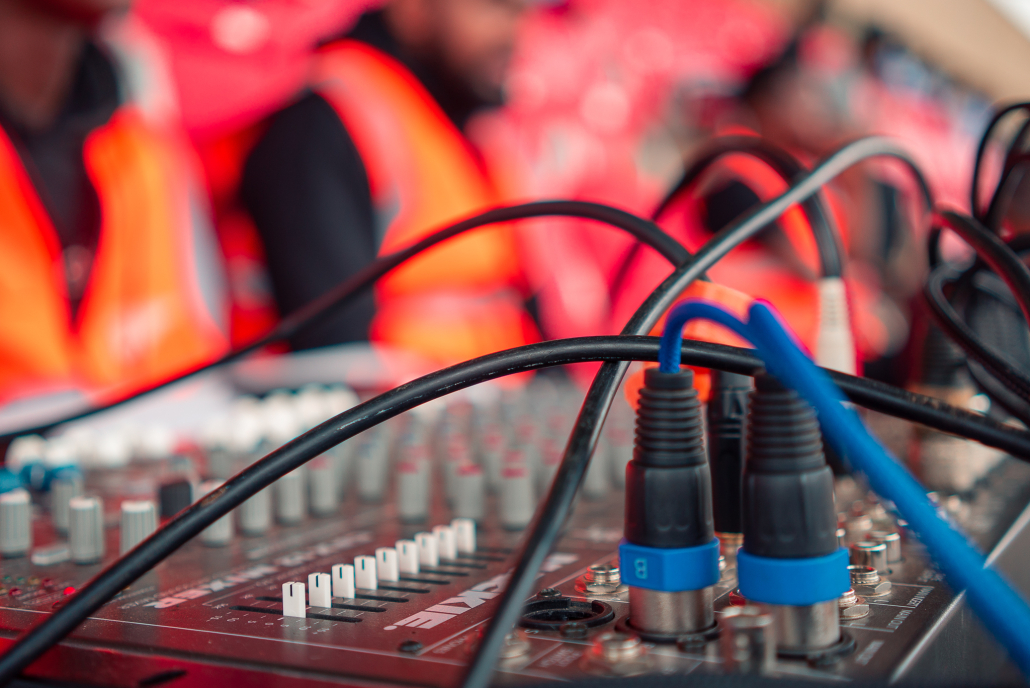
How to Maintain Your AV Equipment in Kenya
Regular professional servicing and precise calibration are essential for maintaining the longevity, reliability, and performance of AV equipment. While basic cleaning and inspections keep gear functional, expert intervention ensures that systems operate at their intended specifications and deliver superior audio-visual experiences. Professional servicing addresses technical issues that may not be apparent during routine checks, while calibration fine-tunes the equipment to suit specific venues, event types, and audience sizes.
6.1 Why Regular Servicing by Experts Extends the Life of AV Gear
-
Preventive Maintenance – Technicians identify and address minor wear and tear before it escalates into costly repairs.
-
Component Health Checks – Experts examine internal circuitry, speaker cones, lenses, and connectors to ensure all parts function optimally.
-
Electrical Safety Inspections – Proper servicing checks for wiring faults, loose connections, or potential short circuits, reducing the risk of damage.
-
Optimized Performance – Routine professional servicing helps maintain output quality, efficiency, and longevity of the equipment.
-
Manufacturer Compliance – Servicing according to manufacturer recommendations preserves warranties and ensures adherence to technical standards.
Regular expert servicing significantly reduces unexpected breakdowns, protects your investment, and keeps AV systems ready for high-quality use.
6.2 How Calibration Ensures Sound and Visuals Perform at Peak Quality
-
Audio Calibration – Adjusting equalizers, crossover frequencies, and gain structures ensures clear, balanced sound across different venues.
-
Visual Calibration – Projectors, LED screens, and lighting systems are tuned for brightness, contrast, color accuracy, and uniform coverage.
-
Environment Adaptation – Calibration considers room acoustics, ambient light, and audience positioning for optimal delivery.
-
Consistency Across Events – Calibrated equipment performs predictably, eliminating surprises during live shows, conferences, or broadcasts.
-
Technical Testing – Post-calibration checks verify that all parameters meet professional standards for clarity, intensity, and fidelity.
Calibration guarantees that both audio and visual elements deliver maximum impact, ensuring audiences experience high-quality presentations.
6.3 Peak Audio’s Role in Providing Expert AV Maintenance Services
-
Comprehensive Maintenance Plans – Peak Audio offers scheduled servicing tailored to the type and frequency of AV equipment use.
-
Skilled Technicians – Experienced engineers perform in-depth inspections, technical repairs, and precision calibration.
-
On-Site and Remote Support – Services are available at client locations or remotely for technical guidance and troubleshooting.
-
Customized Calibration – Peak Audio adjusts systems according to venue size, event type, and client requirements.
-
Long-Term Reliability – Their professional approach ensures equipment remains in peak condition for years, minimizing downtime and maximizing performance.
Peak Audio’s expert maintenance and calibration services ensure that AV systems consistently deliver professional-quality sound and visuals, elevating any event experience.
Professional servicing and calibration are critical for preserving AV equipment performance, preventing costly failures, and delivering flawless event experiences. Expert servicing extends the life of gear, while calibration ensures sound and visuals meet the highest standards. Partnering with skilled providers like Peak Audio guarantees that every component—from speakers to projectors—operates at its best, offering reliable, high-quality audio-visual output for any corporate event, concert, or conference.
7. Training Your Team on Proper Usage

How to Maintain Your AV Equipment in Kenya
Even the most advanced AV equipment can fail or underperform if not handled correctly. Proper usage training equips your team with the knowledge and skills to operate, set up, and maintain audio-visual systems safely. This reduces the risk of damage, ensures consistent performance, and maximizes the return on investment in AV gear. Effective training also empowers staff to troubleshoot minor issues on the spot, minimizing event interruptions and improving overall efficiency.
7.1 Why Mishandling Often Leads to Equipment Failure
-
Physical Damage – Dropping microphones, mishandling cables, or improper transport can cause permanent damage.
-
Electrical Issues – Incorrect powering on/off procedures, or using incompatible outlets, can harm internal circuits.
-
Operational Errors – Misconfiguring audio levels, projector settings, or lighting cues may lead to poor performance or technical faults.
-
Increased Maintenance Costs – Frequent mishandling accelerates wear and tear, resulting in costly repairs and replacements.
-
Reduced Event Quality – Improperly operated equipment can compromise sound clarity, visual display, and audience experience.
Training mitigates these risks by ensuring the team understands proper handling protocols.
7.2 Basic Training on Setup, Operation, and Shutdown
-
Setup Procedures – Teaching correct assembly of speakers, microphones, projectors, and lighting rigs.
-
Operation Guidelines – Instructing on volume control, screen calibration, lighting cues, and real-time adjustments.
-
Shutdown Protocols – Safe power-down sequences, cable management, and protective storage practices.
-
Routine Checks – Ensuring that all components are tested for functionality before and after events.
-
Emergency Handling – Guidance on quickly addressing minor faults to prevent escalation.
Structured training ensures staff can manage AV systems efficiently while maintaining equipment integrity.
7.3 How Peak Audio Provides Guidance and Support for Safe Handling
-
Hands-On Workshops – Peak Audio conducts practical sessions demonstrating correct setup, operation, and storage techniques.
-
Customized Instructions – Guidance tailored to the specific equipment used and the type of events hosted.
-
Remote and On-Site Support – Ongoing technical support and advice are available to reinforce training lessons.
-
Documentation and Manuals – Clear instructions, checklists, and troubleshooting guides for team reference.
-
Continuous Learning – Periodic refresher training to keep staff updated on new equipment features and best practices.
By leveraging Peak Audio’s training support, teams gain confidence and competence, ensuring equipment is used safely and effectively at every event.
Training your team on proper AV equipment usage is vital for reducing failures, avoiding unnecessary repairs, and maintaining high-quality event experiences. Basic instruction on setup, operation, and shutdown, combined with expert guidance from providers like Peak Audio, ensures staff handle technology safely and competently. Well-trained teams contribute to seamless event execution, prolong the life of AV systems, and enhance audience satisfaction.
8. Long-Term Maintenance Plan
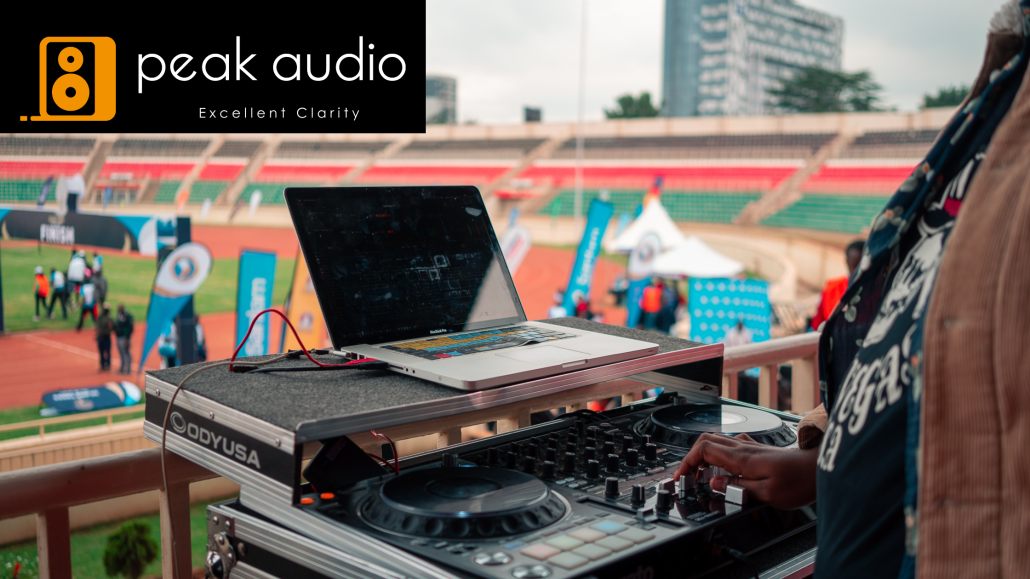
How to Maintain Your AV Equipment in Kenya
A long-term maintenance plan is essential for ensuring Audio Visual equipment continues to perform reliably over time. Regular, structured care helps prevent unexpected failures, reduces downtime during events, and extends the lifespan of costly technology investments. Planning ahead for maintenance allows organizations to allocate resources efficiently, track the health of their systems, and schedule timely updates or replacements before problems arise.
8.1 Setting a Maintenance Schedule Tailored to Usage Frequency
-
Frequency-Based Checks – Determine inspection intervals based on how often equipment is used, e.g., daily for high-traffic venues, monthly for occasional events.
-
Pre-Event and Post-Event Inspections – Routine checks before and after each event to identify potential issues early.
-
Component-Specific Schedules – Different items require different attention: microphones, speakers, and lighting need more frequent testing than cables or mounting hardware.
-
Seasonal Adjustments – Schedule additional checks during periods of extreme weather or high usage to prevent environmental damage.
-
Automated Reminders – Use calendars or maintenance software to ensure tasks aren’t overlooked.
A carefully structured schedule keeps equipment in peak condition and avoids last-minute surprises during events.
8.2 Budgeting for Replacement Parts and Upgrades
-
Spare Components – Allocate funds for essential backups like cables, mics, bulbs, and fuses.
-
Planned Upgrades – Budget for gradual upgrades to newer technology that enhances performance or efficiency.
-
Emergency Repairs – Set aside a reserve for unexpected repairs to minimize disruption.
-
Cost Forecasting – Estimate yearly maintenance expenses to integrate them into overall event or operational budgets.
-
Vendor Relationships – Maintain relationships with suppliers for timely, cost-effective access to genuine parts.
Proactive budgeting ensures that maintenance and replacement needs don’t interrupt events or strain finances.
8.3 Tracking Service History to Monitor Performance
-
Maintenance Logs – Record inspections, repairs, replacements, and software updates for each piece of equipment.
-
Performance Trends – Identify recurring issues or components that degrade faster than expected.
-
Warranty Monitoring – Keep track of warranty periods to make claims promptly.
-
Data-Driven Decisions – Use logs to decide when to replace, upgrade, or retire equipment.
-
Accountability – Assign responsibility for maintenance tasks and record outcomes to ensure consistency.
Tracking service history provides insights into equipment reliability and informs future investment decisions.
Implementing a long-term maintenance plan ensures AV equipment remains reliable, efficient, and ready for any event. By scheduling routine checks, budgeting for replacements and upgrades, and tracking service history, organizations can prevent failures, optimize performance, and extend the life of their technology. A structured maintenance plan not only safeguards investments but also guarantees that every event runs smoothly, with high-quality audio-visual experiences for attendees.
9. How Peak Audio Supports You in AV Equipment Care

How to Maintain Your AV Equipment in Kenya
Proper care and maintenance of AV equipment are critical for delivering seamless events and protecting expensive investments. Peak Audio not only provides professional event services but also acts as a trusted partner in maintaining, servicing, and optimizing AV systems. Their expertise ensures that clients’ audio-visual setups remain reliable, efficient, and ready for any occasion. With Peak Audio’s support, organizations can focus on their events while leaving technical care and maintenance to experienced professionals.
9.1 Expertise in Event Services and AV Equipment Maintenance
-
Comprehensive Knowledge – Peak Audio’s team understands the technical demands of both live events and equipment upkeep.
-
Integrated Solutions – Clients benefit from services that cover setup, operation, troubleshooting, and long-term maintenance.
-
Preventive Focus – Peak Audio emphasizes proactive care, reducing the likelihood of equipment failure during crucial events.
-
Wide Range of Equipment – From sound systems and microphones to lighting and display technologies, all gear is maintained to peak performance.
-
Event Experience Insights – Lessons learned from live events inform maintenance strategies, ensuring practical and effective care routines.
This expertise allows clients to trust that their equipment is being maintained to professional standards.
9.2 Support with Repair, Servicing, and Training
-
Repair Services – Peak Audio quickly addresses hardware issues, from minor faults to major repairs, minimizing downtime.
-
Scheduled Servicing – Regular inspections, calibrations, and software updates keep systems in optimal condition.
-
Training for Clients – Guidance on safe handling, proper setup, operation, and shutdown helps prevent accidental damage.
-
Customized Maintenance Plans – Tailored programs based on usage frequency, event scale, and equipment type.
-
Remote and Onsite Assistance – Clients can access support both virtually and physically, depending on urgency and location.
With these services, clients are empowered to maintain peak AV performance while avoiding costly mistakes or interruptions.
9.3 Peak Audio as a Long-Term Partner for Equipment Reliability
-
Consistent Monitoring – Continuous support ensures that potential issues are caught before they affect events.
-
Strategic Planning – Recommendations for upgrades, replacements, and expansions keep AV infrastructure modern and effective.
-
Trusted Relationship – Peak Audio builds long-term partnerships, understanding each client’s unique AV requirements.
-
Peace of Mind – Clients can focus on events and business operations, confident that equipment reliability is professionally managed.
-
Sustainability and Cost Efficiency – Proper maintenance extends equipment life, reducing replacement costs over time.
Positioning itself as a long-term partner, Peak Audio ensures that AV systems remain dependable, efficient, and capable of delivering exceptional event experiences year after year.
Peak Audio’s support goes beyond providing event services; it encompasses comprehensive care for AV equipment, including repair, maintenance, training, and strategic planning. By leveraging their expertise, clients benefit from reduced downtime, optimized performance, and extended equipment lifespan. Whether managing large-scale corporate events or routine setups, Peak Audio acts as a reliable partner, guaranteeing that every piece of AV technology performs flawlessly when it matters most.
10. FAQs on AV Equipment Maintenance
Maintaining AV equipment is essential for consistent performance, durability, and overall event quality. Many clients have questions about servicing, cleaning, calibration, and protection of their gear. Below is a detailed guide addressing common concerns to help you understand best practices for AV equipment care.
How Often Should AV Equipment Be Serviced?
-
Routine Inspections – Basic checks should be conducted before and after every event to ensure cables, microphones, projectors, and speakers are intact.
-
Periodic Professional Servicing – Comprehensive servicing, including calibration, firmware updates, and technical adjustments, is recommended every 6–12 months depending on usage.
-
Event-Driven Maintenance – High-intensity or frequent events may require more frequent maintenance to prevent unexpected failures.
Regular servicing prevents minor issues from escalating and keeps your AV systems in peak condition.
Can I Clean My AV Equipment Myself or Should I Hire a Professional?
-
Safe DIY Cleaning – Dusting, wiping with soft cloths, and careful cable management can be done safely by users.
-
When to Seek Professionals – For internal cleaning, sensitive electronics, or complex systems, expert servicing ensures no accidental damage occurs.
-
Preventing Liquid or Shock Damage – Professionals follow best practices to avoid moisture, static, or accidental drops.
Balancing safe DIY care with professional maintenance extends equipment life significantly.
What Are the Most Common Causes of AV Equipment Failure?
-
Physical Damage – Dropped microphones, projectors, or speakers can compromise functionality.
-
Wear and Tear – Repeated use without proper maintenance causes connectors, cables, and moving parts to degrade.
-
Software or Firmware Issues – Outdated systems may glitch or fail during events.
-
Environmental Factors – Heat, humidity, dust, or improper storage can accelerate deterioration.
Understanding these causes helps in planning preventive care.
How Can I Tell If My AV System Needs Calibration?
-
Audio Distortion or Imbalance – Uneven sound distribution or muffled audio indicates the need for adjustment.
-
Visual Irregularities – Projectors showing color inconsistency or LED displays misaligned require recalibration.
-
Performance Drop – Slower responsiveness, delays, or glitches during operation signal potential calibration needs.
-
Professional Checks – Regular technical inspections by experts identify subtle issues before they become major problems.
Calibration ensures sound and visuals meet high-quality standards during every event.
Is It Worth Investing in Protective Cases for All Equipment?
-
Physical Protection – Cases prevent shocks, drops, and environmental damage during storage and transport.
-
Longevity – Equipment stored properly in cases tends to last longer and perform better.
-
Cost Savings – Preventing damage reduces repair and replacement expenses over time.
Investing in high-quality protective gear is a small upfront cost compared to potential repair costs.
Does Updating Firmware Really Improve AV Equipment Performance?
-
Bug Fixes – Firmware updates often correct glitches or software conflicts.
-
New Features – Updates can unlock improved functionality, better connectivity, or enhanced compatibility.
-
Performance Optimization – Ensures systems run smoothly, reducing the risk of unexpected failures during events.
Keeping systems up to date maximizes reliability and event readiness.
How Can Peak Audio Help Extend the Life of My AV Equipment?
-
Expert Maintenance – Professional inspections, cleaning, and repairs tailored to each device.
-
Training and Guidance – Educates teams on safe handling, operation, and storage practices.
-
Calibration and Updates – Regular technical checks and firmware management optimize performance.
-
Long-Term Partnership – Peak Audio acts as a trusted advisor, planning maintenance schedules, replacements, and upgrades for sustained equipment health.
With their support, AV systems remain reliable, high-performing, and ready for every event.
Proper AV equipment maintenance is essential for reliability, durability, and high-quality event performance. By understanding the frequency of servicing, safe cleaning practices, calibration needs, protective measures, and firmware updates, clients can prevent failures and extend equipment lifespan. Peak Audio’s expert support, training, and proactive maintenance services ensure that AV systems continue to perform at their best, delivering seamless experiences and protecting valuable investments over the long term.
Keep Your AV Equipment Performing Flawlessly with Peak Audio
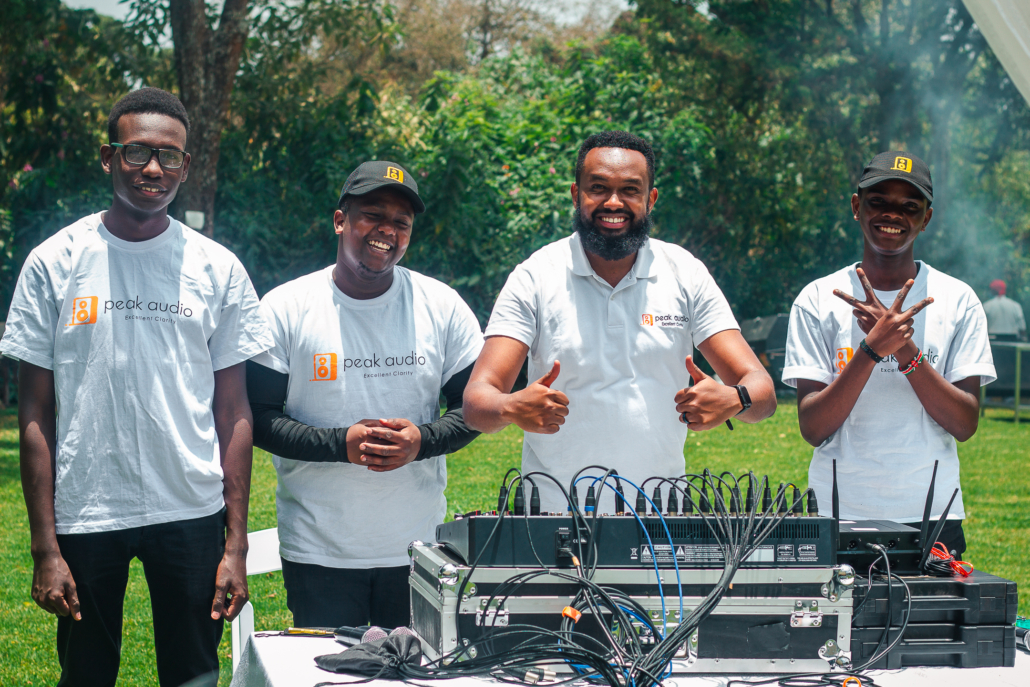
How to Maintain Your AV Equipment in Kenya
Proper maintenance of AV equipment goes far beyond simple upkeep—it is essential for guaranteeing reliability, performance, and longevity. From professional-grade microphones and speakers to high-definition projectors and LED screens, every component in your AV setup represents a significant investment. Regular cleaning, safe handling, routine inspections, and careful storage prevent wear and tear, reduce the risk of damage, and ensure that your equipment is always event-ready. Neglecting these critical practices can lead to technical failures, degraded sound and visuals, and disruptions that impact the overall success of corporate events, conferences, concerts, or any live production.
Partnering with experts in AV maintenance provides peace of mind and operational efficiency. Peak Audio specializes in servicing, repairing, and calibrating AV systems to maintain optimal performance. Their team offers comprehensive support, including professional cleaning, hardware troubleshooting, firmware and software updates, and team training for proper equipment use. By implementing structured maintenance schedules and leveraging Peak Audio’s expertise, clients can maximize the lifespan of their AV gear while ensuring that every event achieves flawless execution.
Take your event experiences to the next level by entrusting your AV equipment to a trusted partner. With Peak Audio, you gain more than maintenance services—you gain reliability, technical guidance, and long-term support to keep your systems performing at their peak. Don’t leave the success of your events to chance—partner with Peak Audio today and ensure your AV equipment consistently delivers crisp audio, stunning visuals, and seamless performance that impresses every audience.

